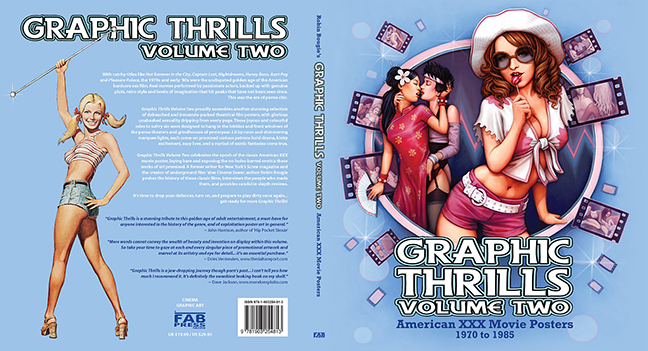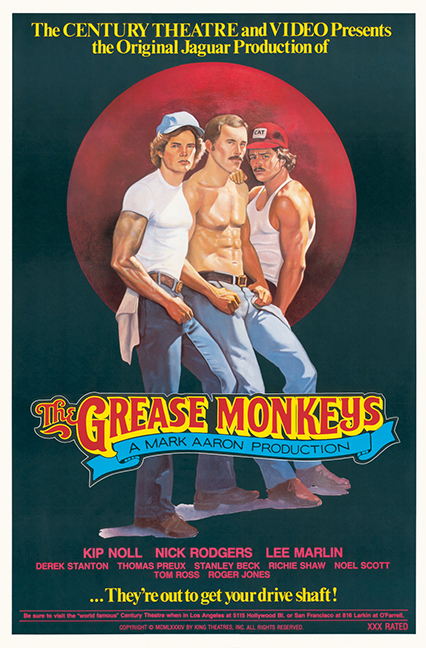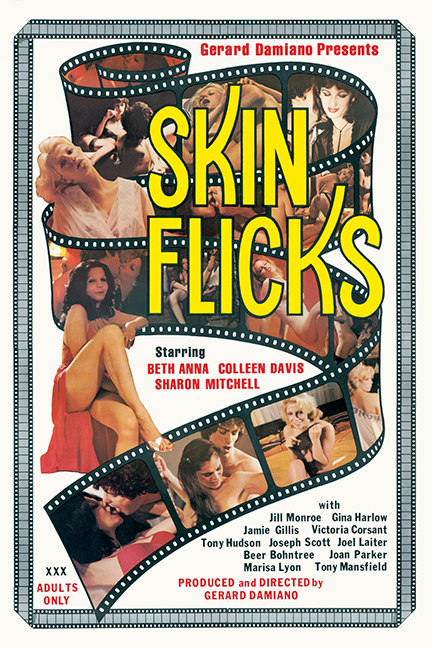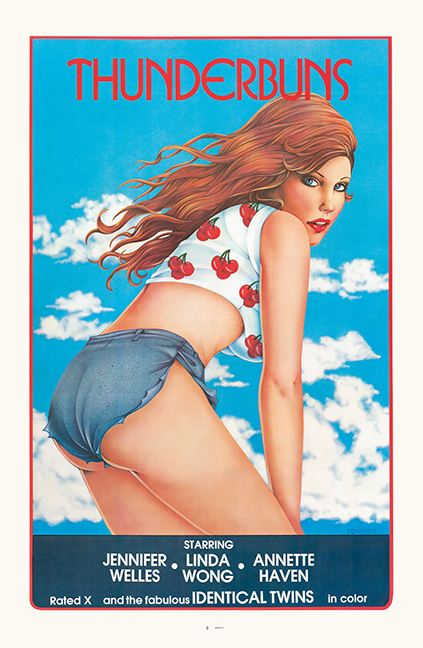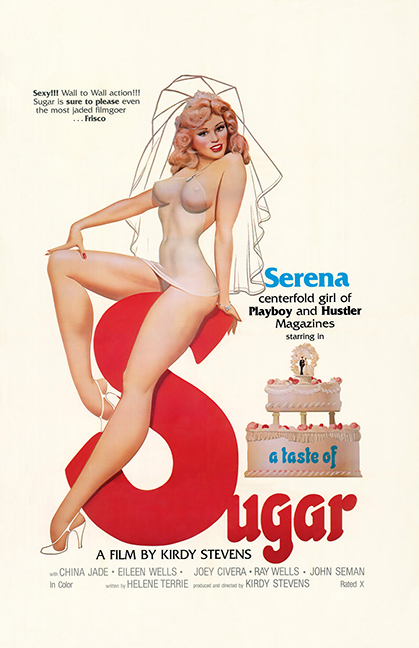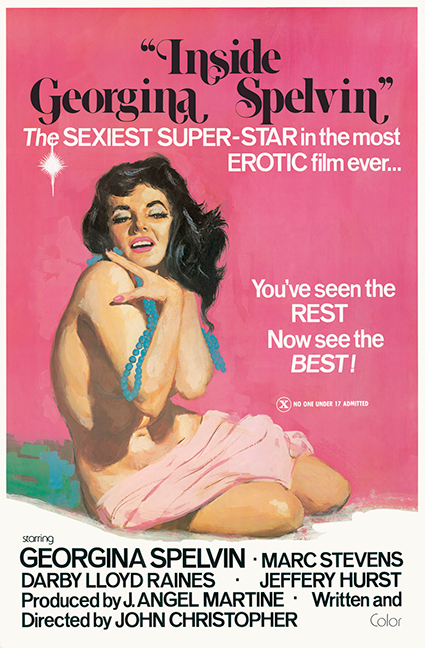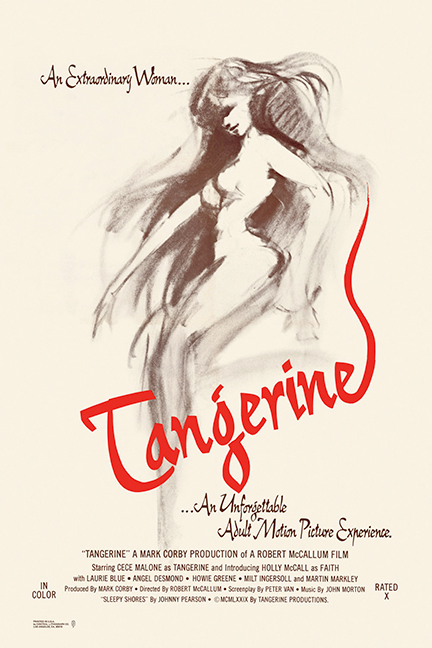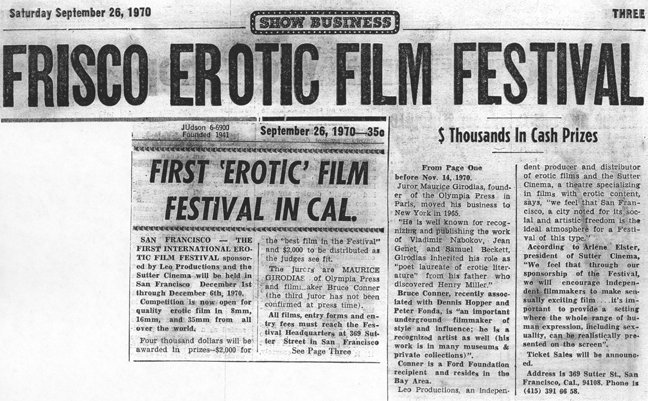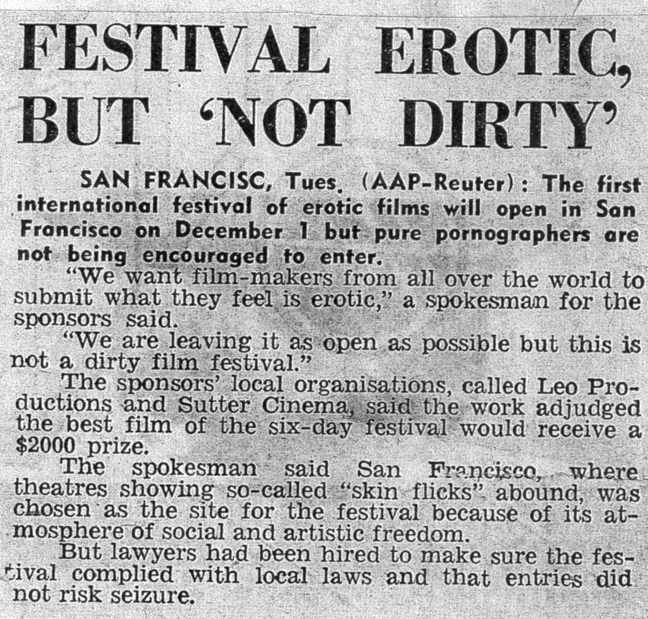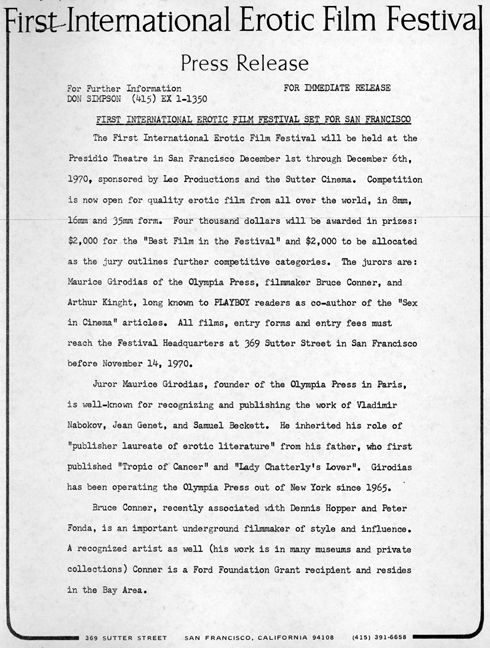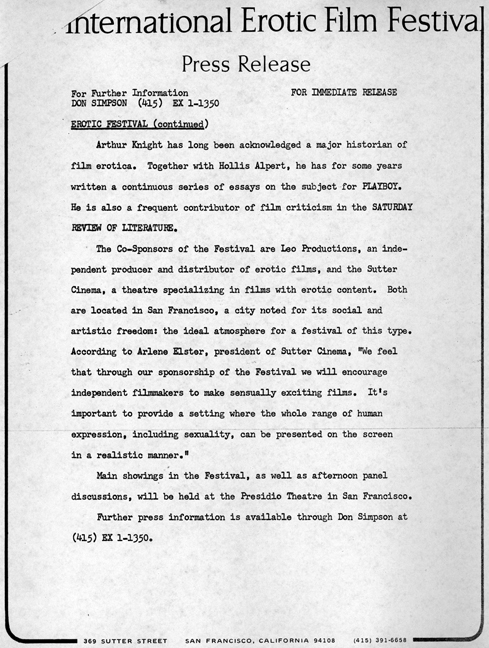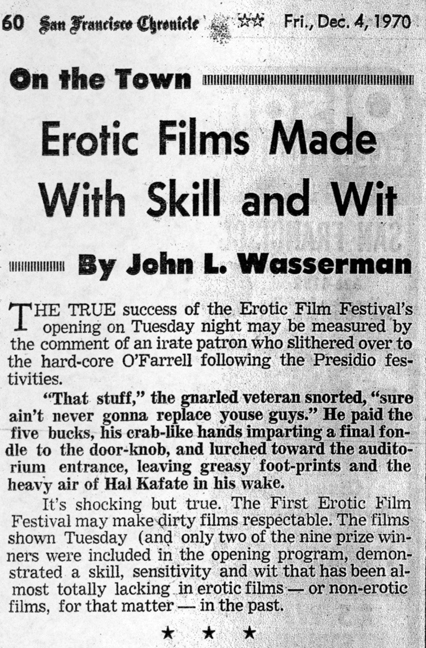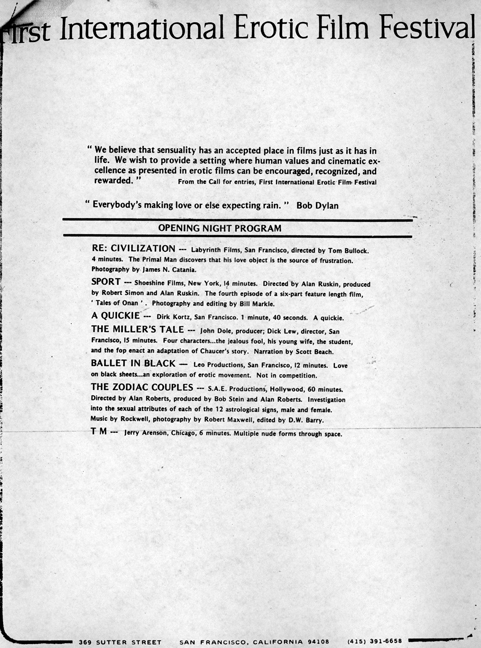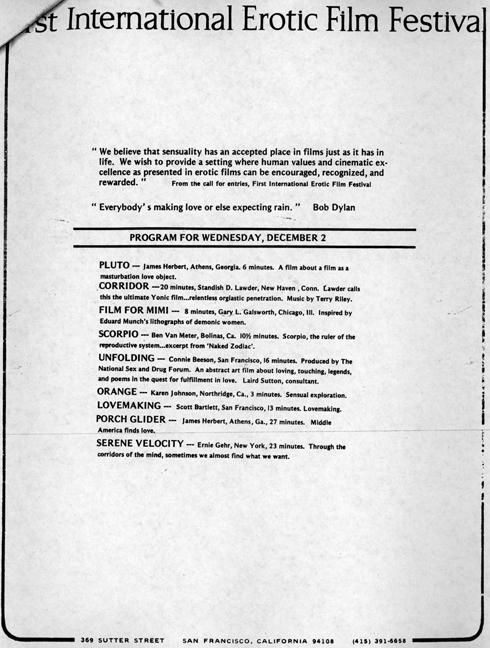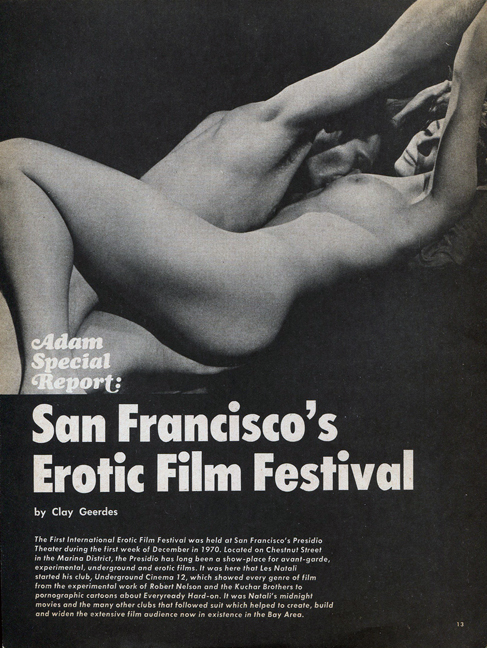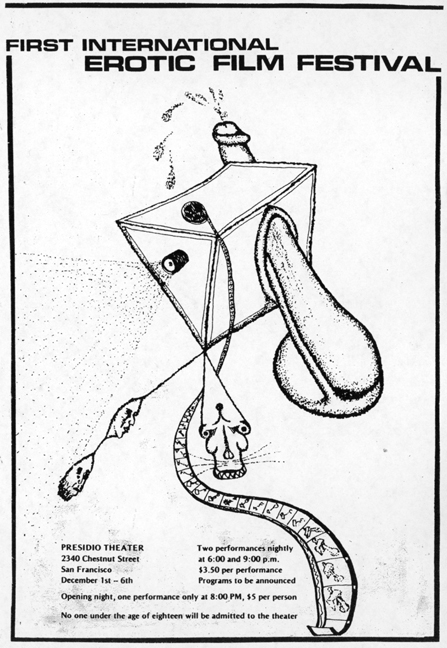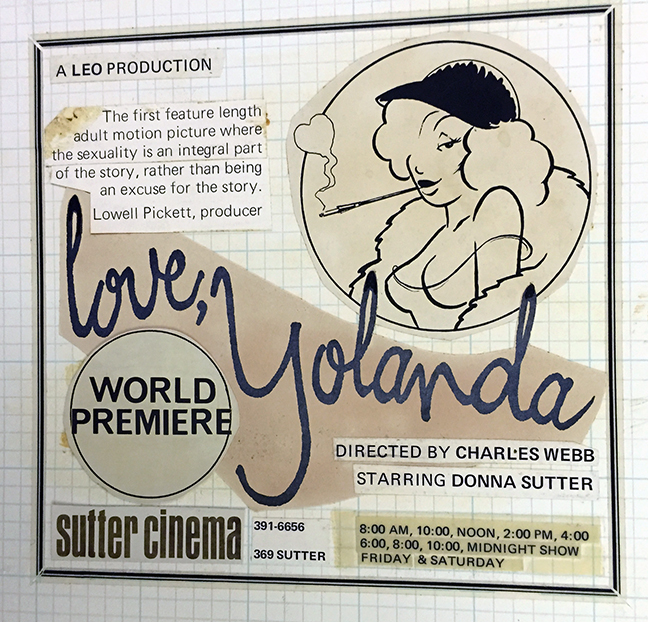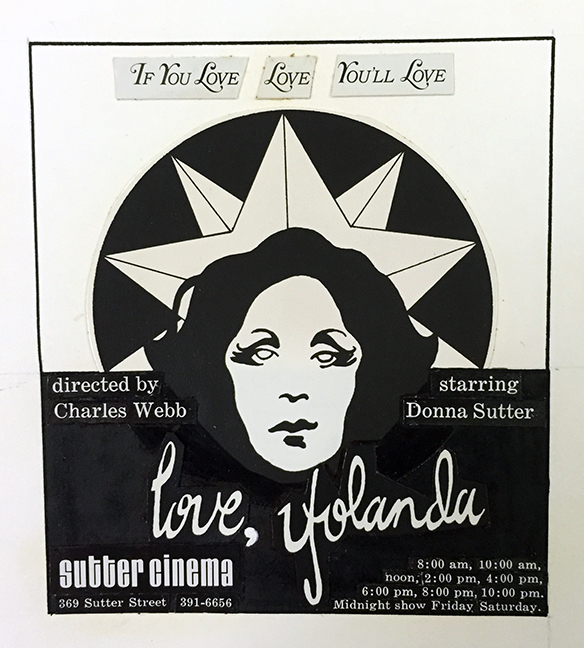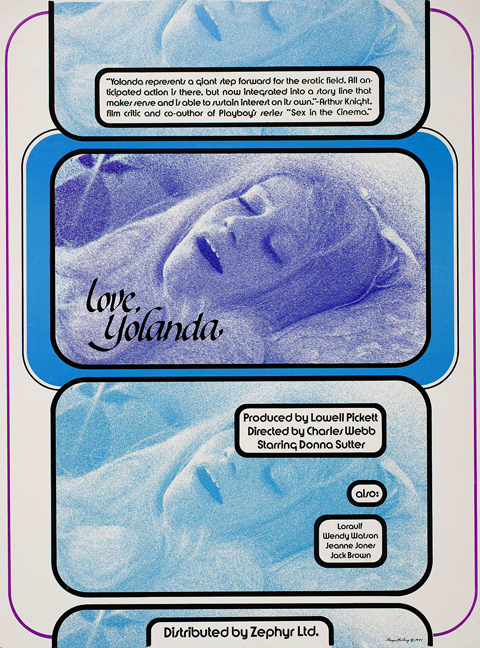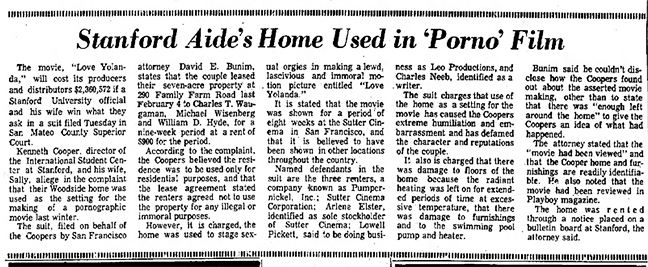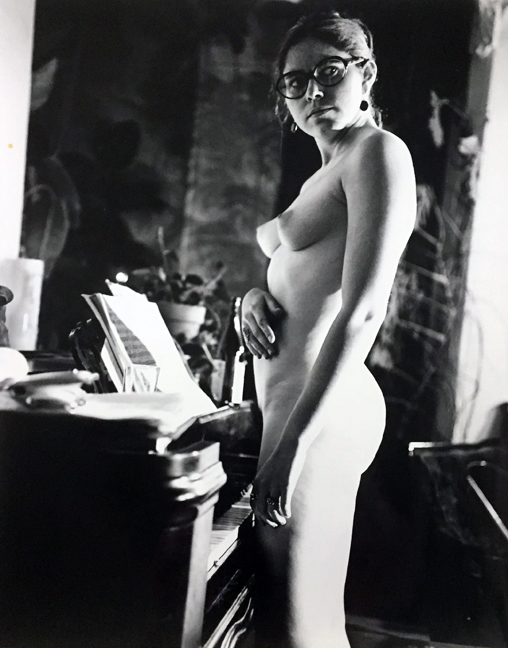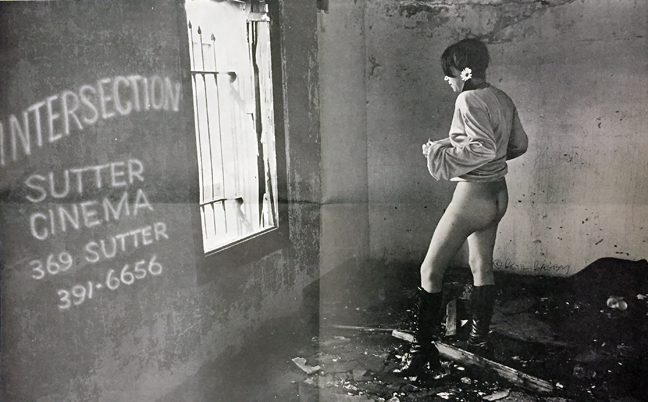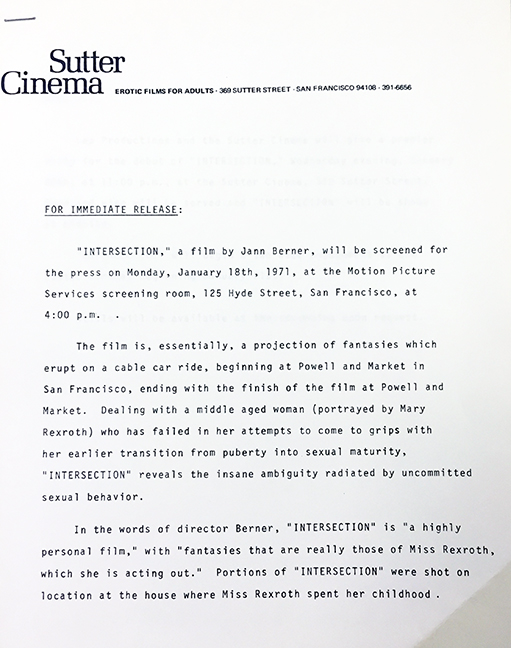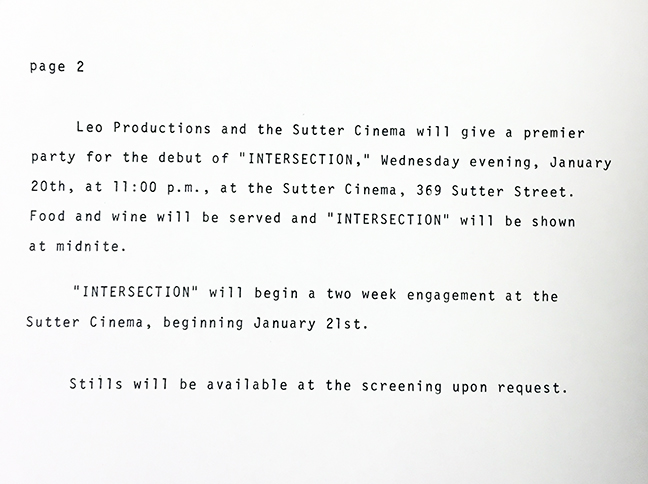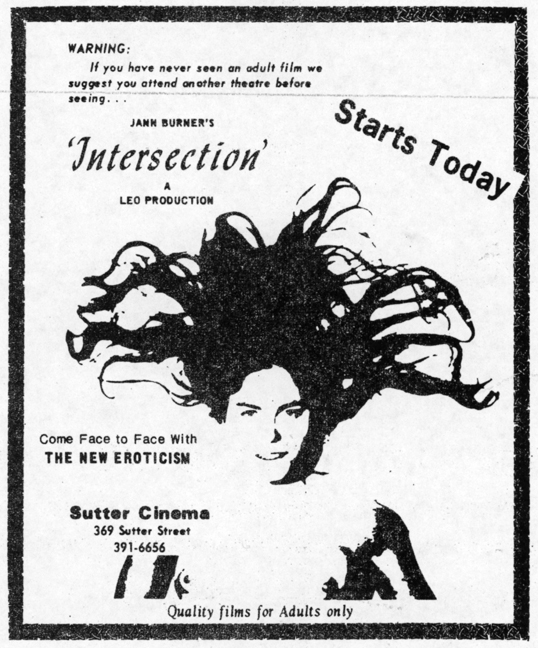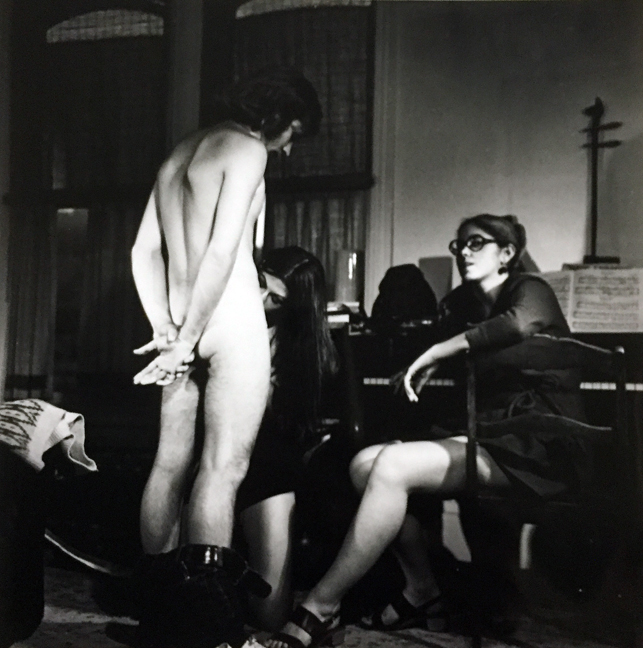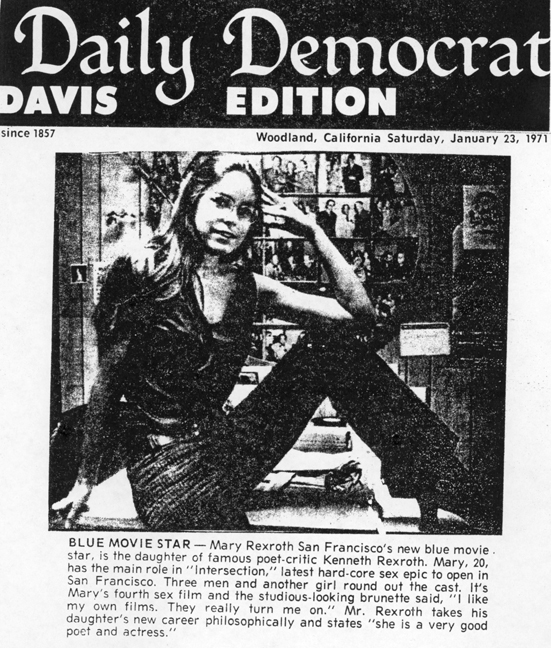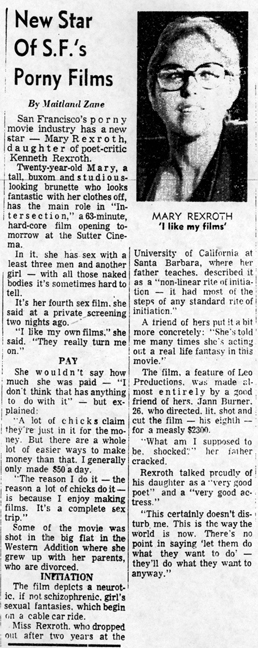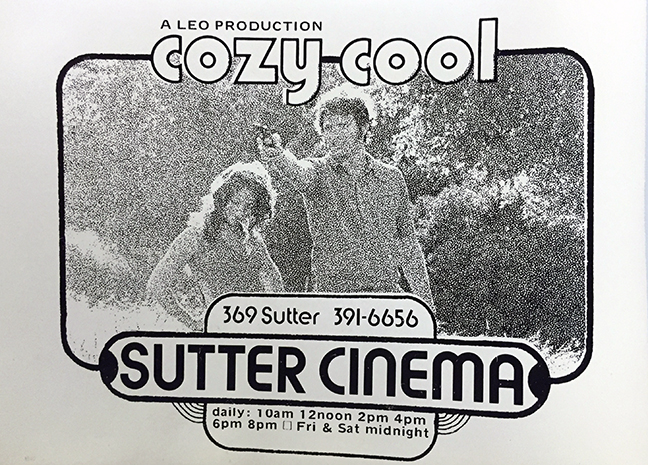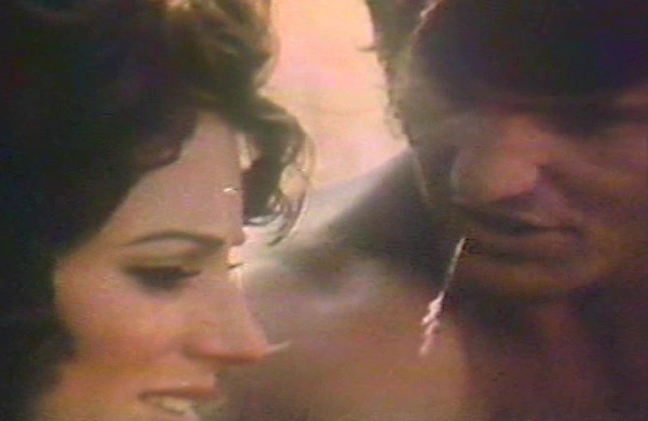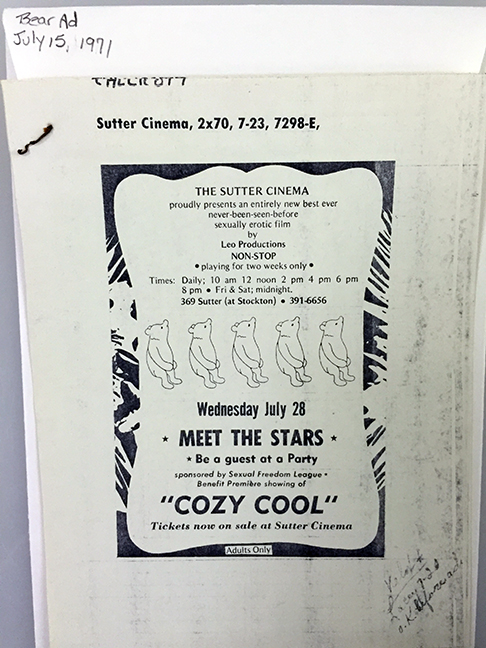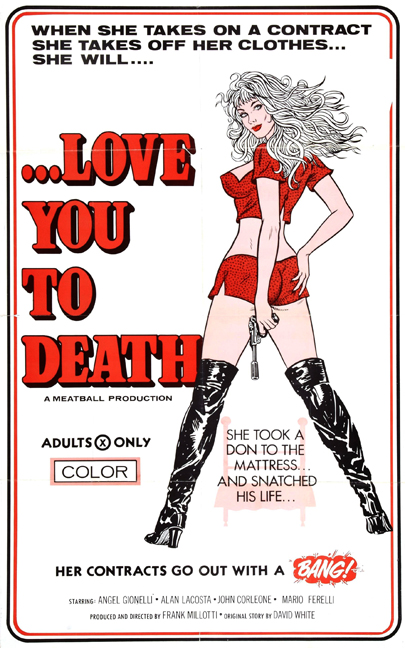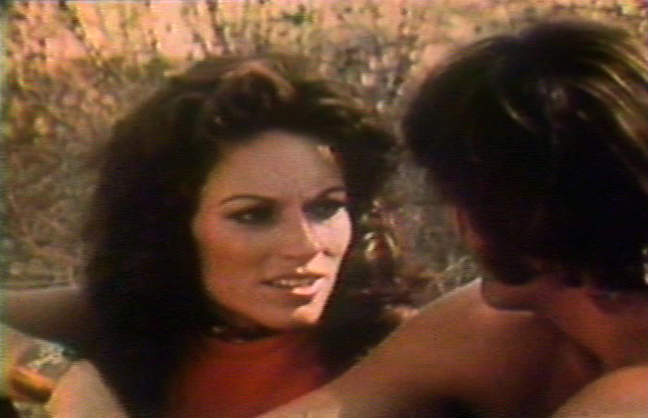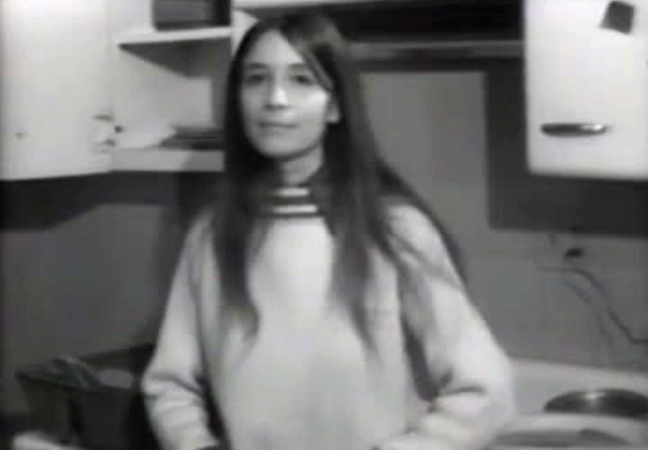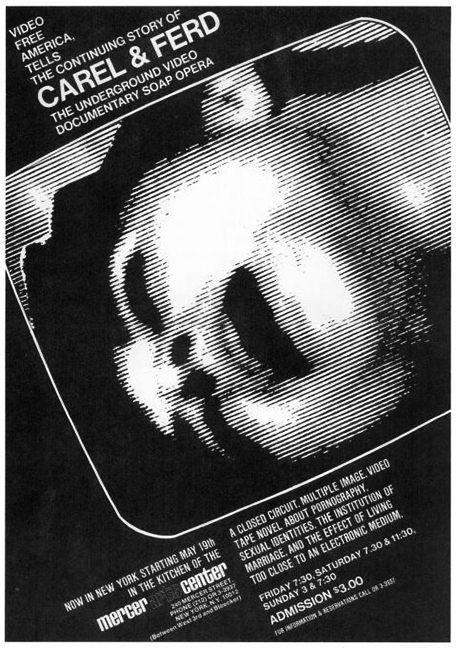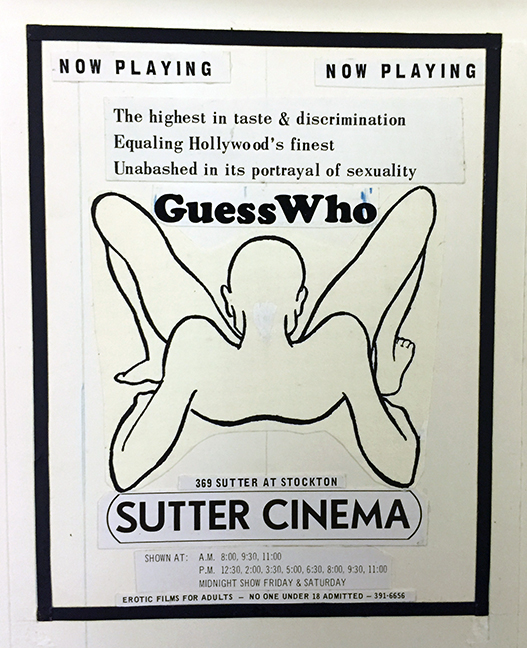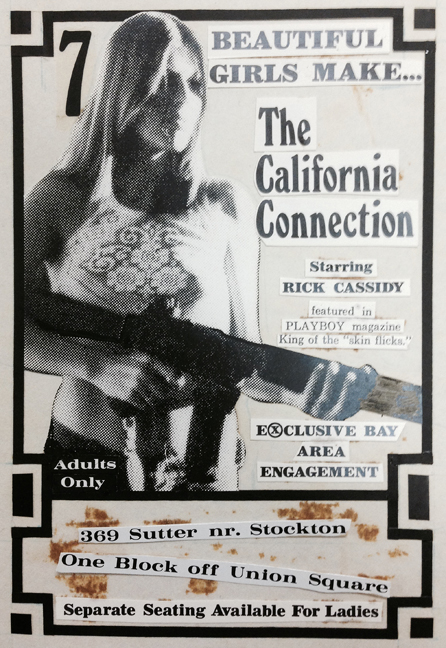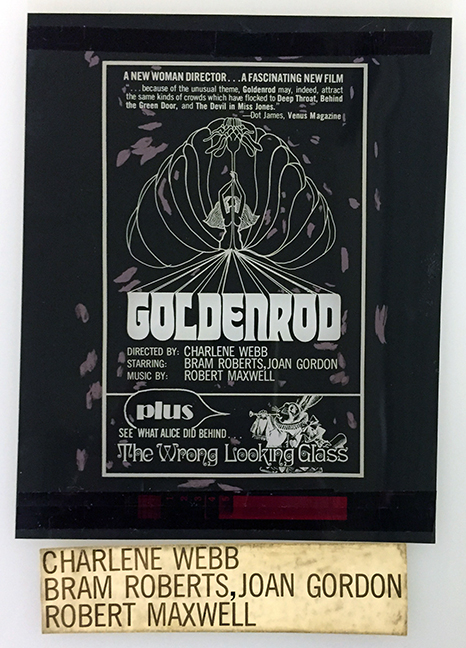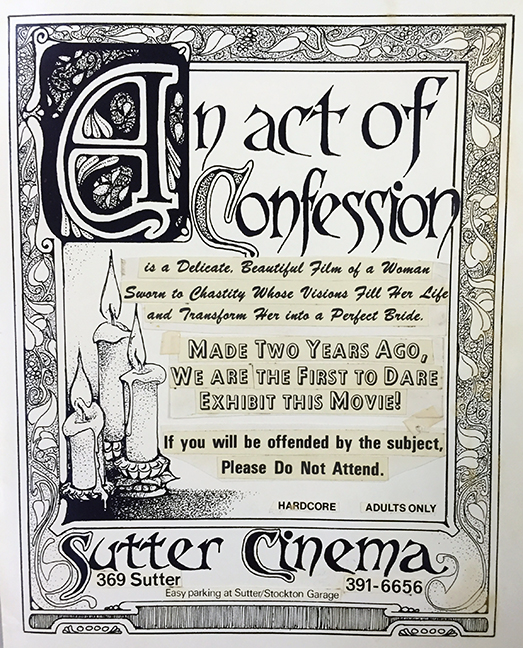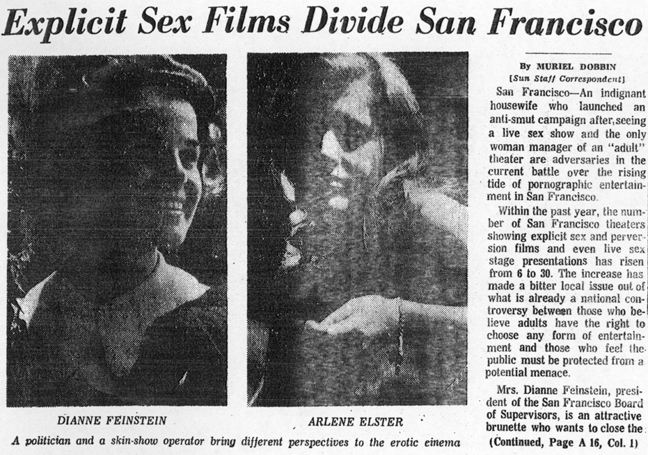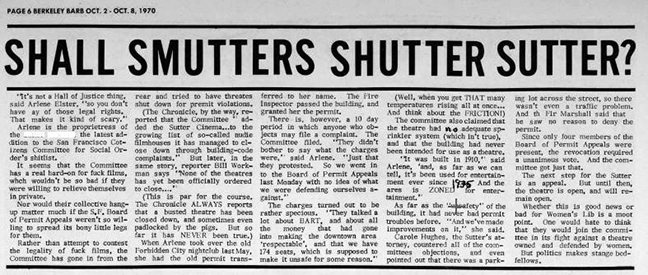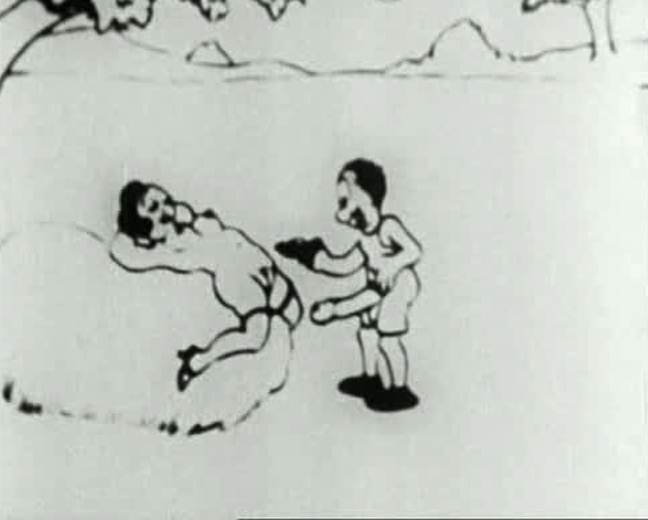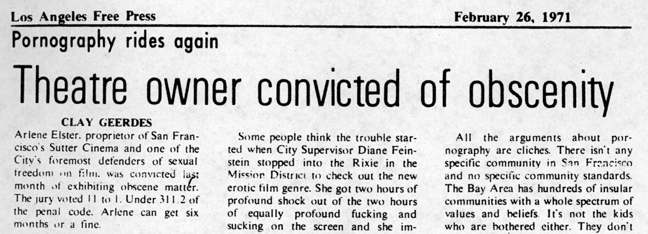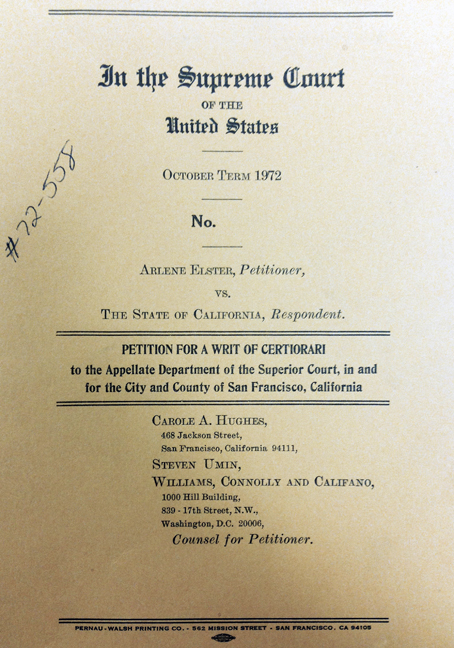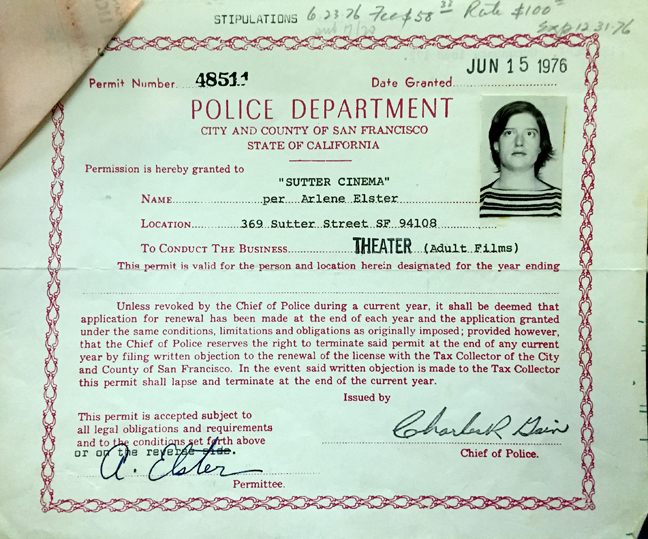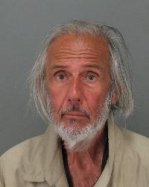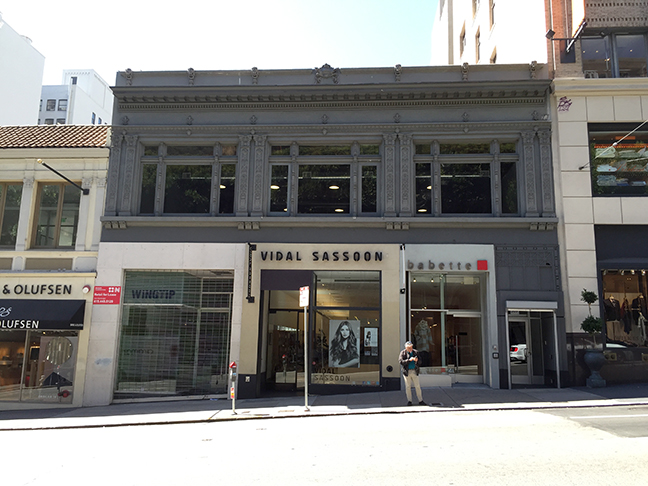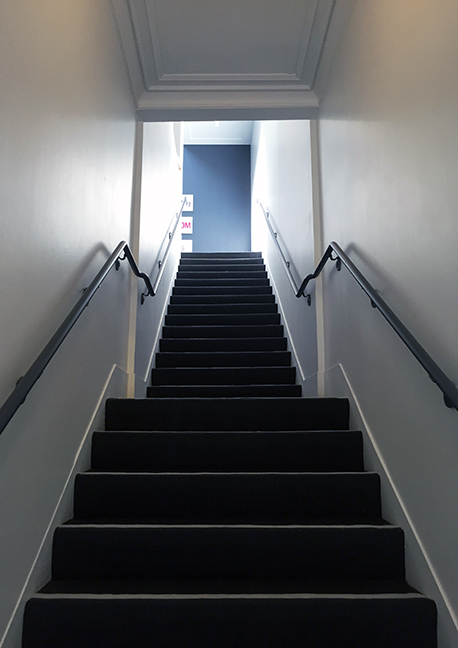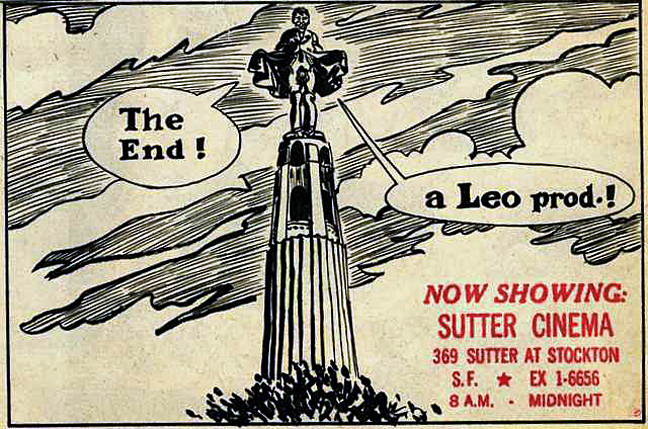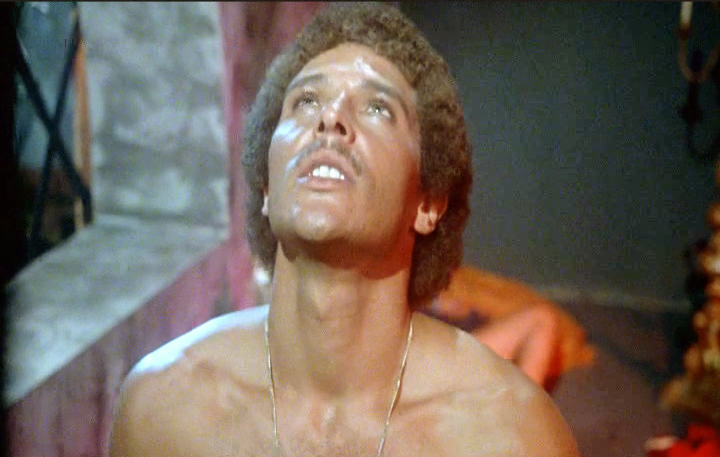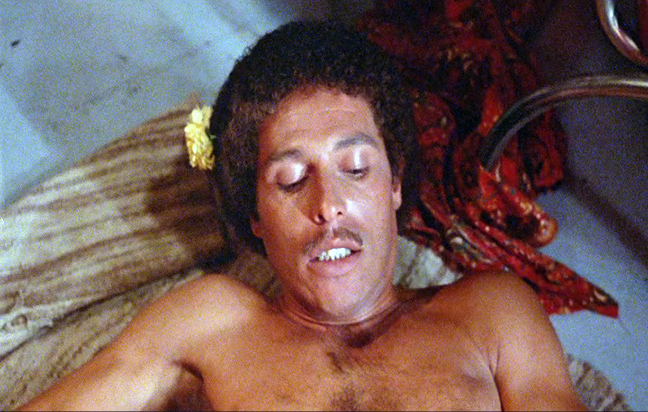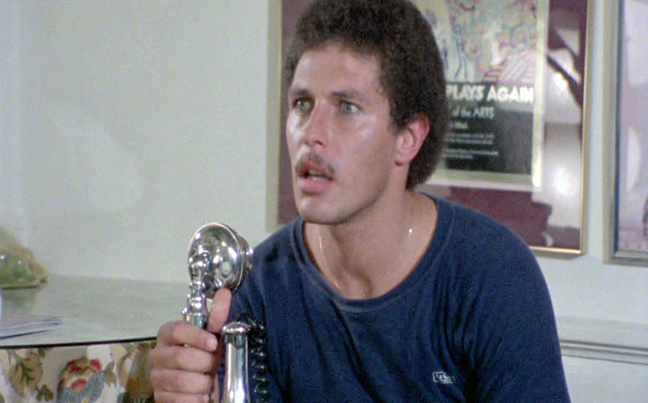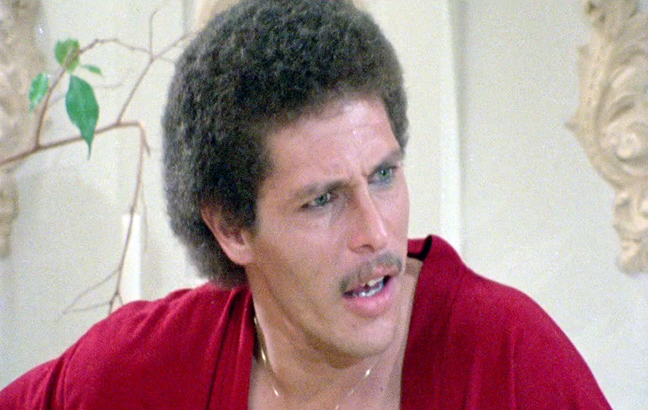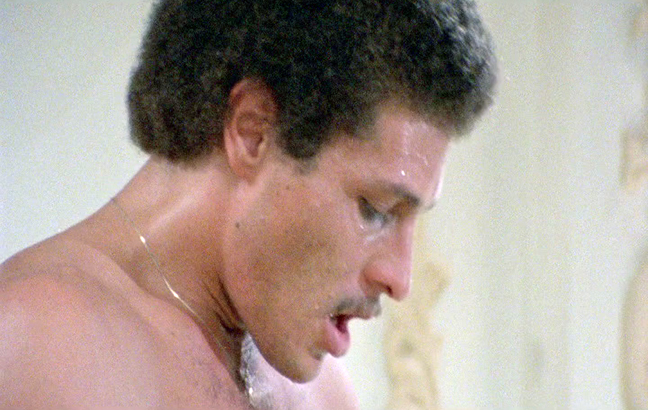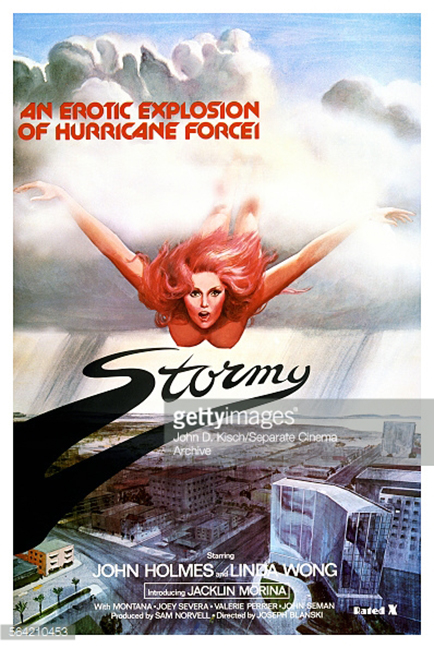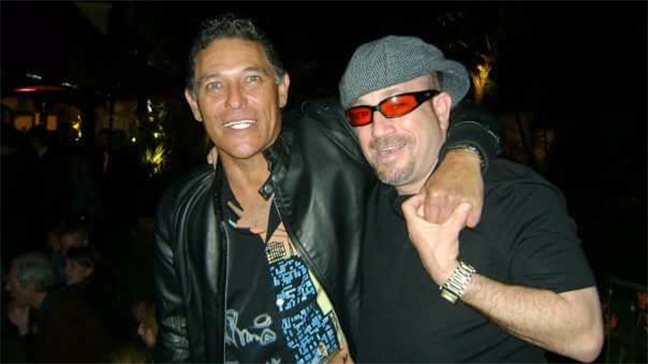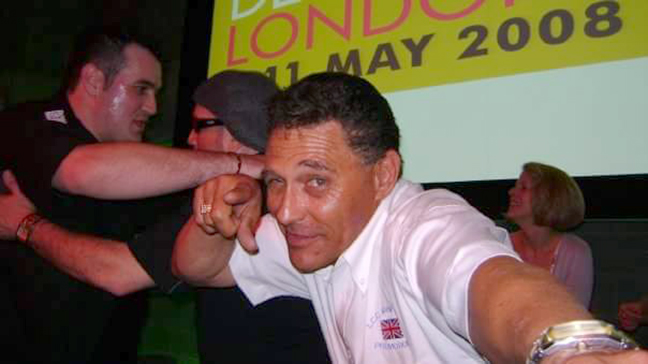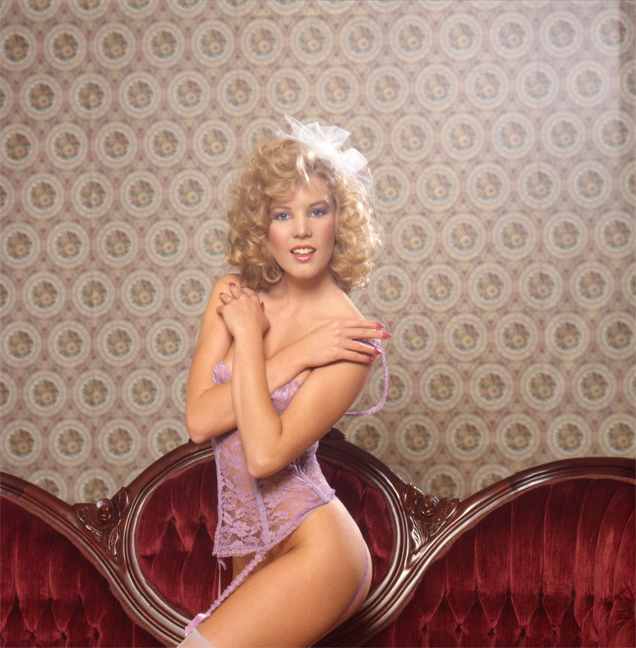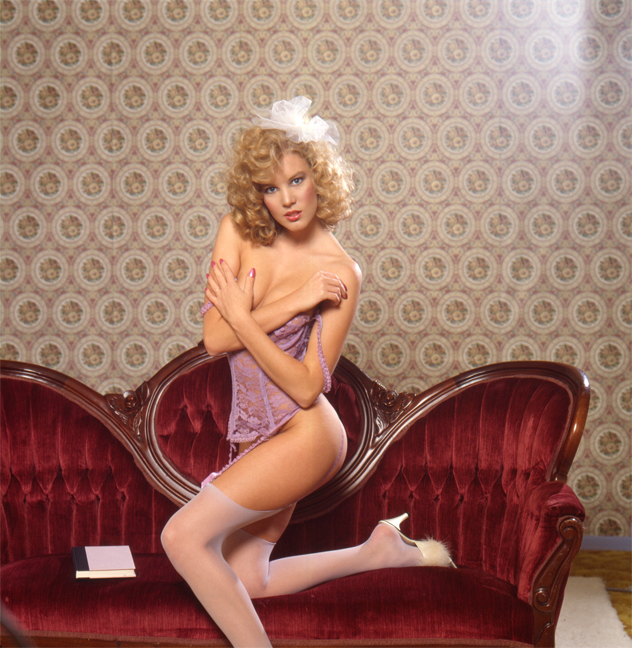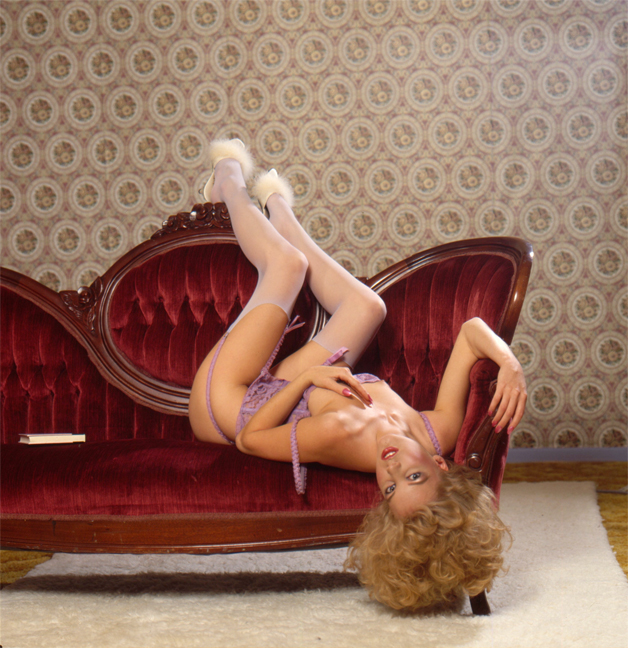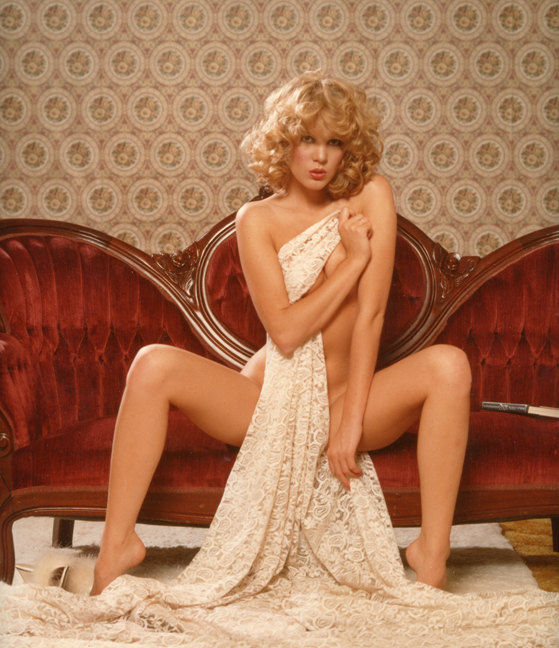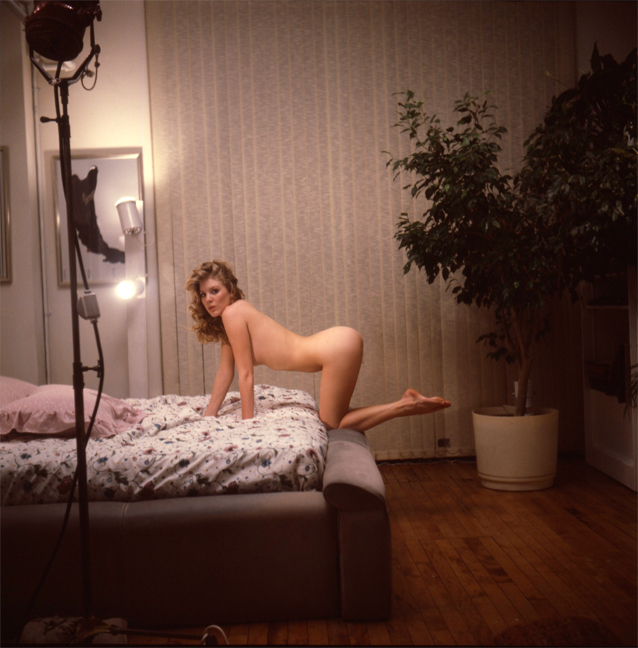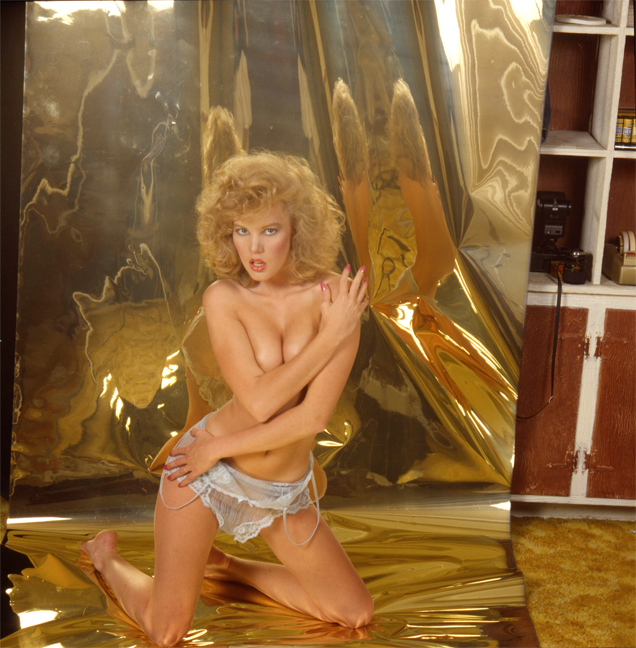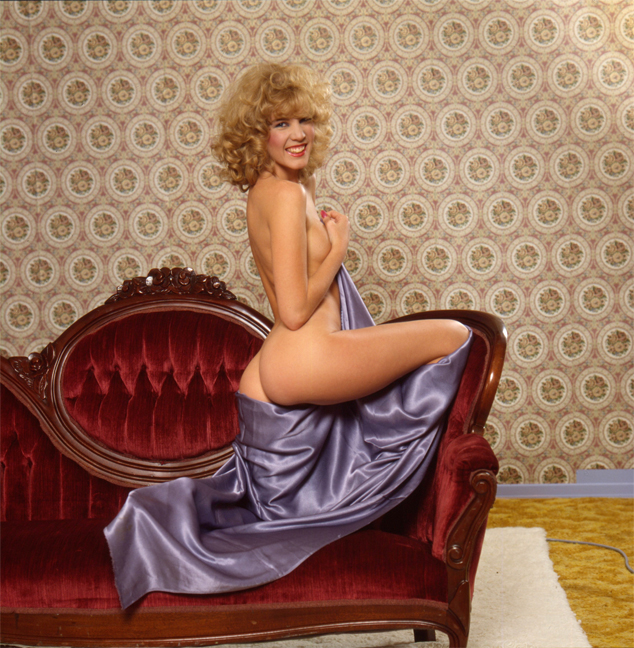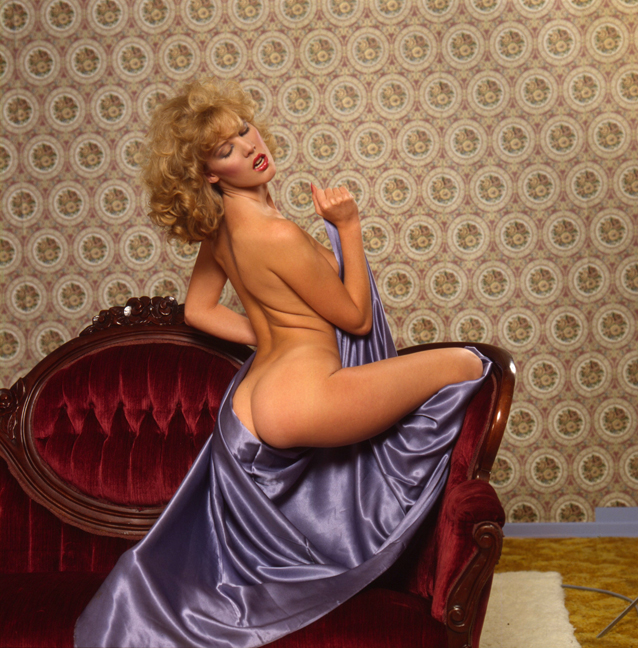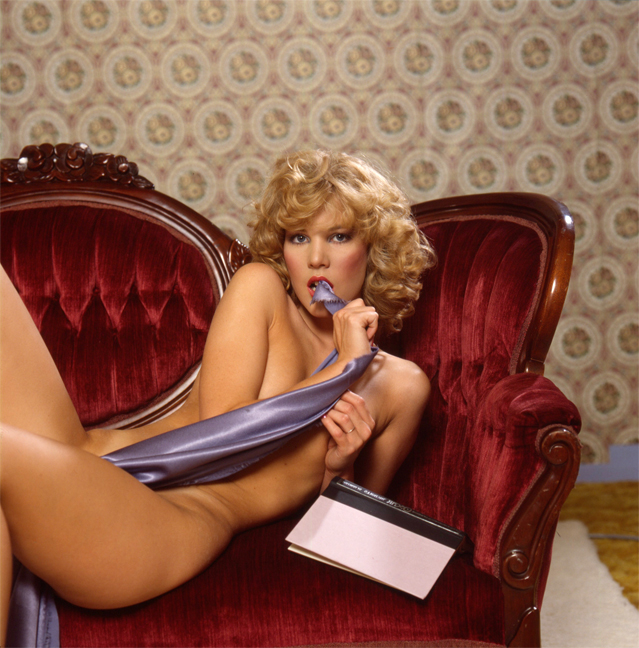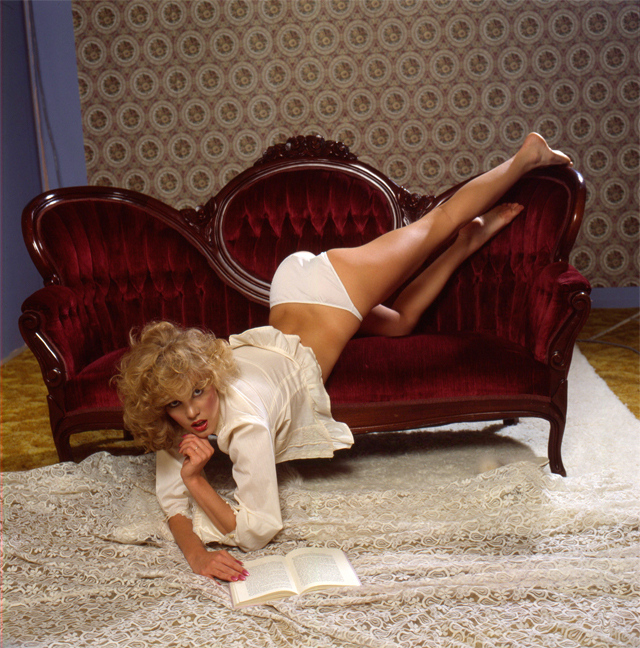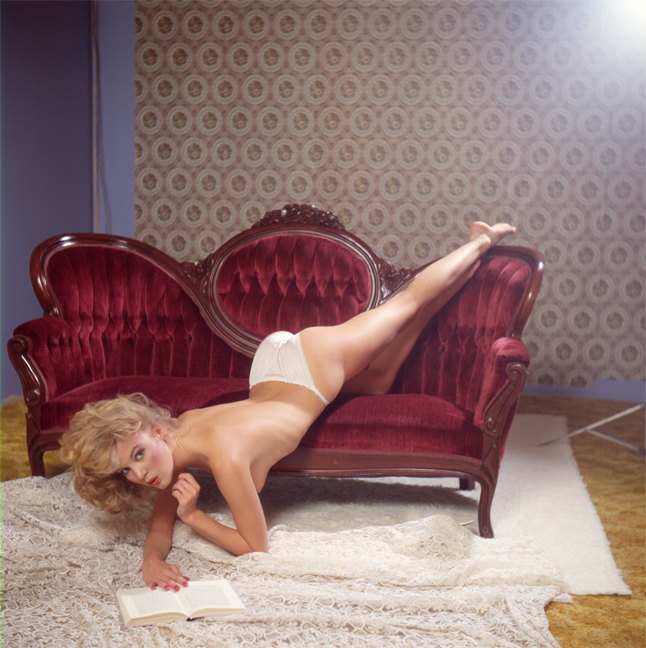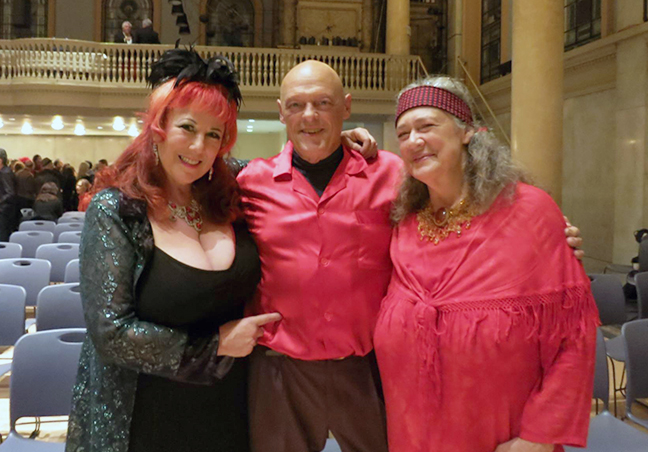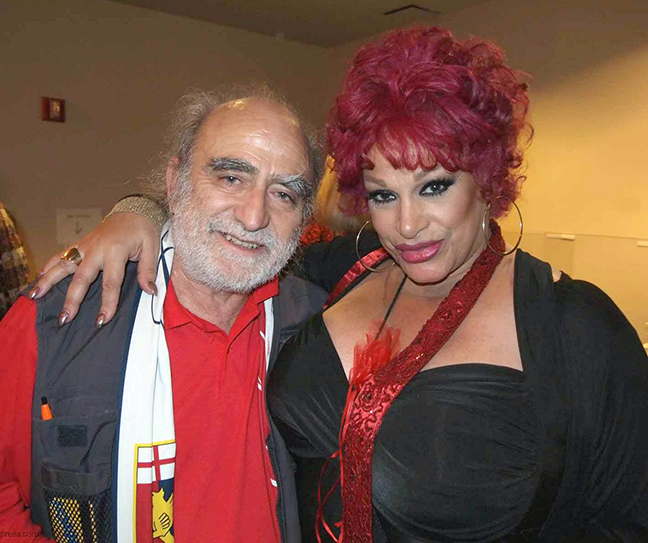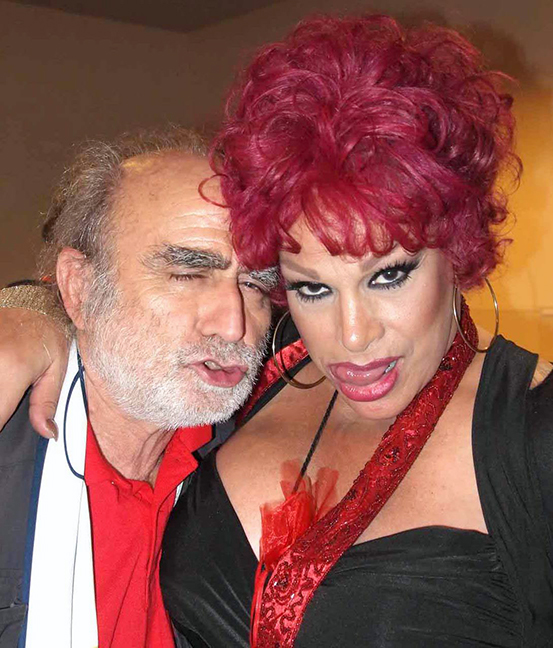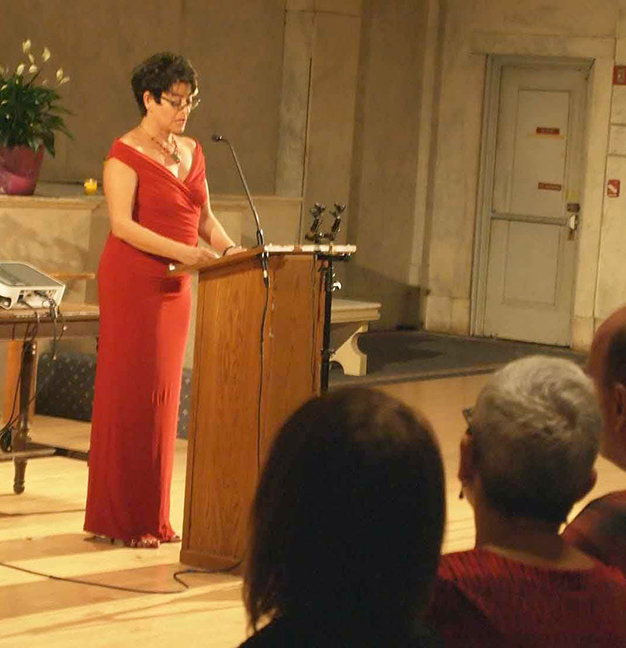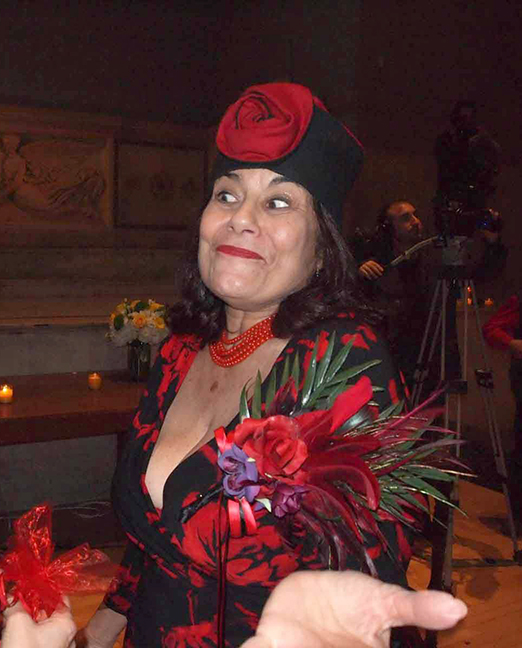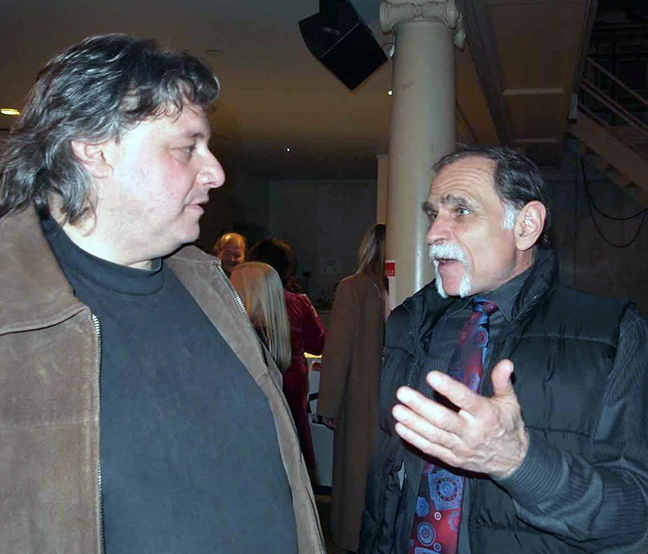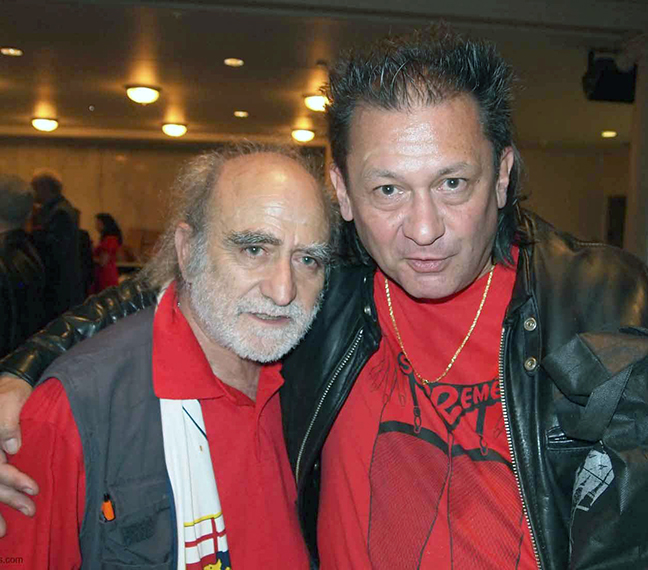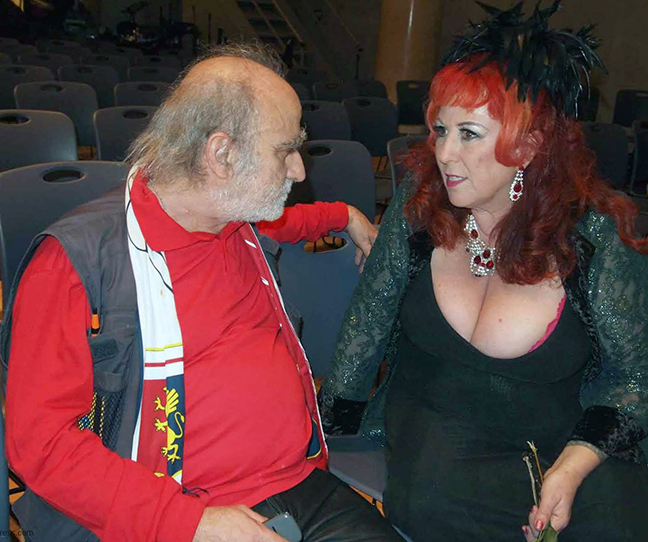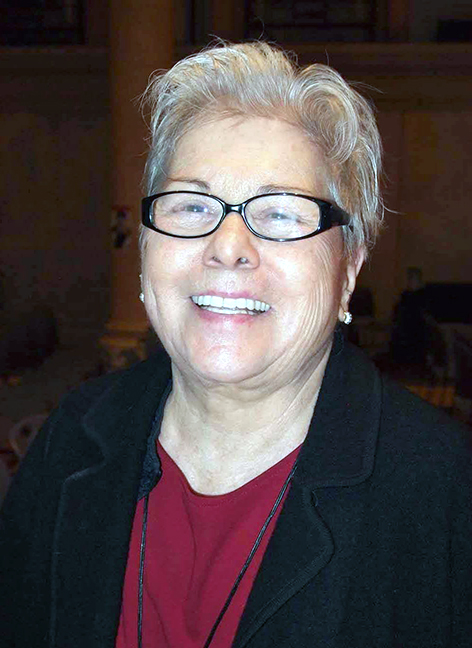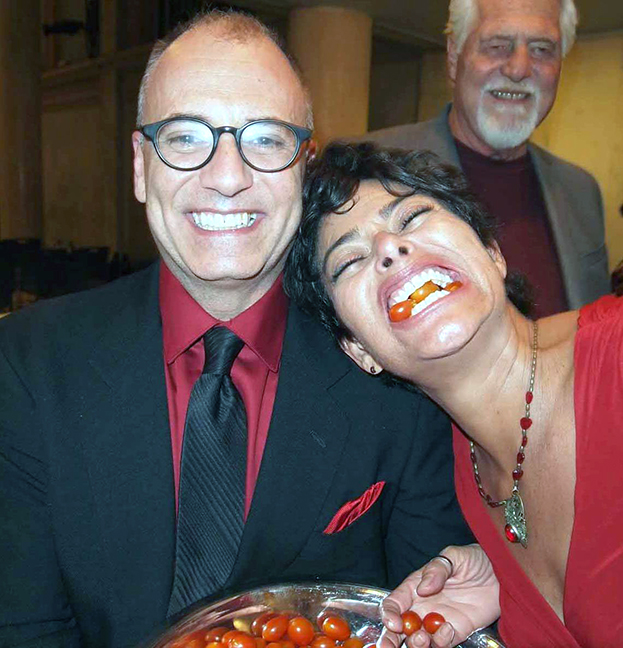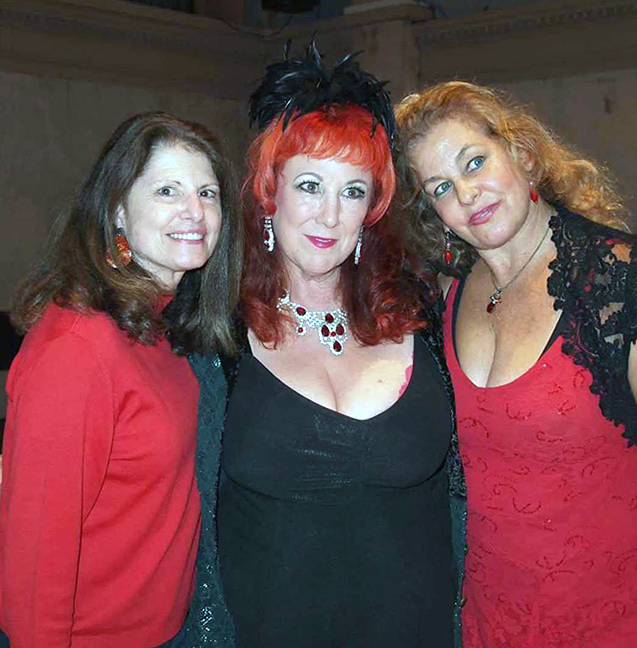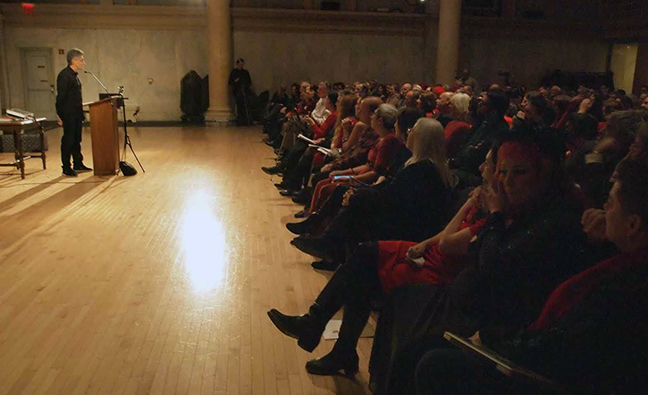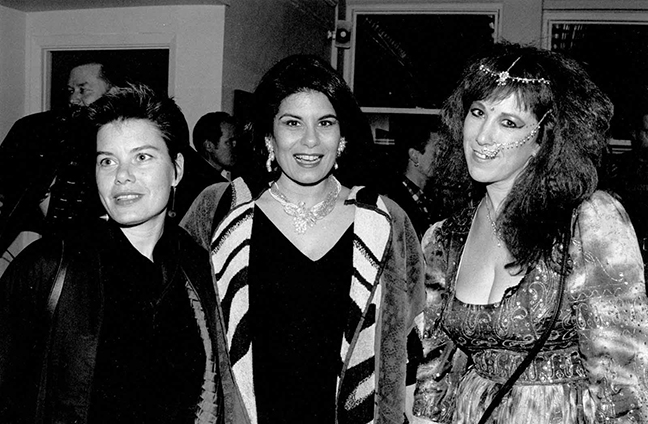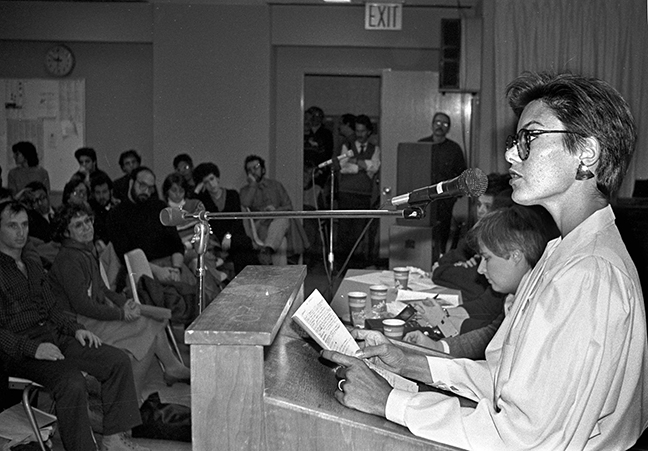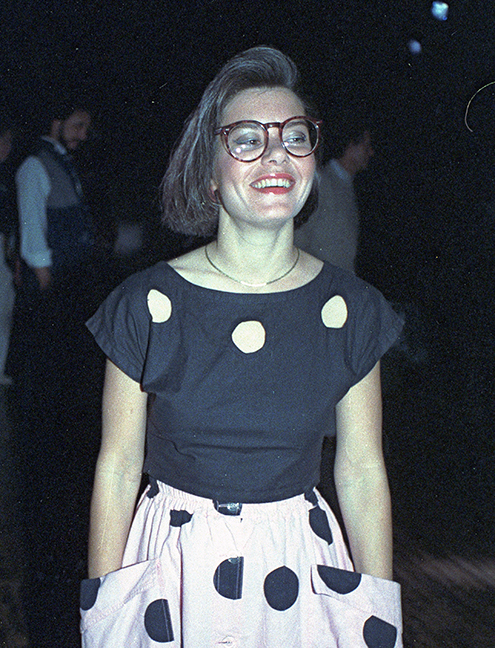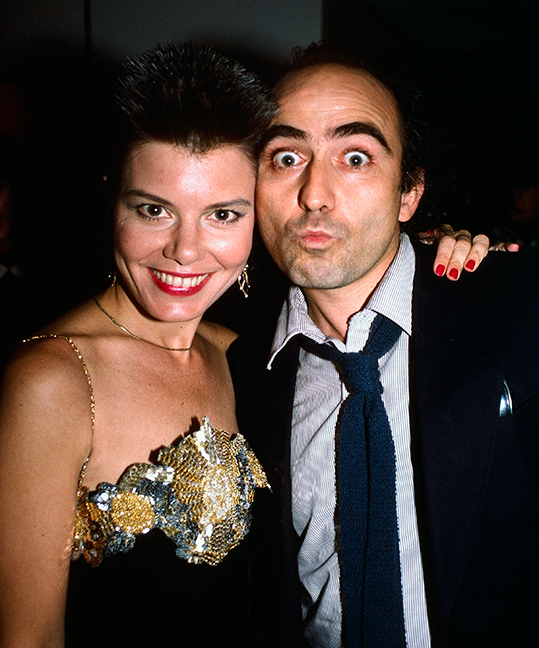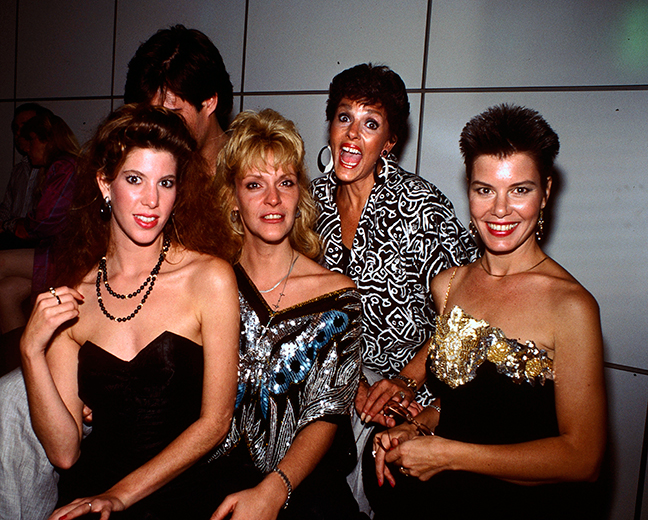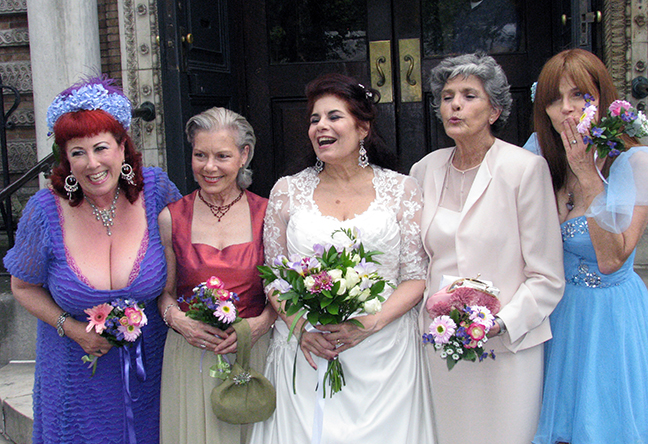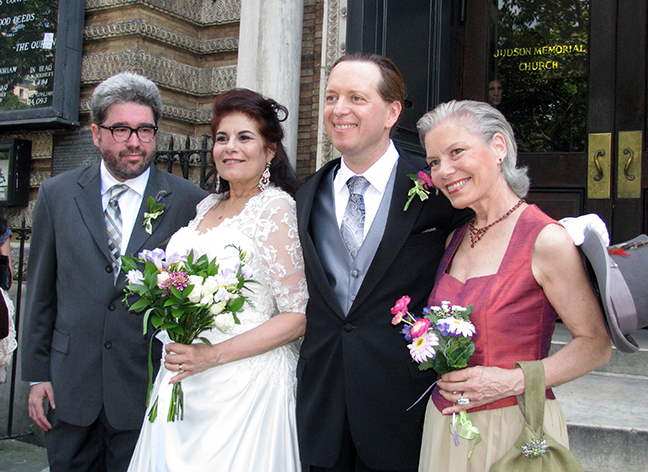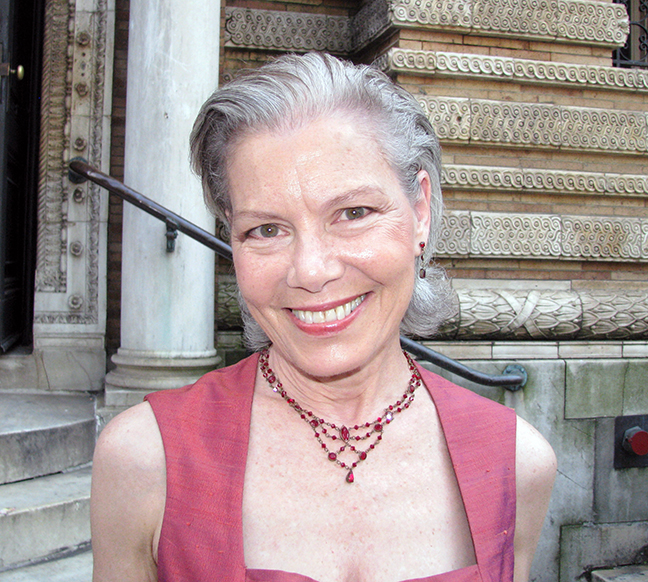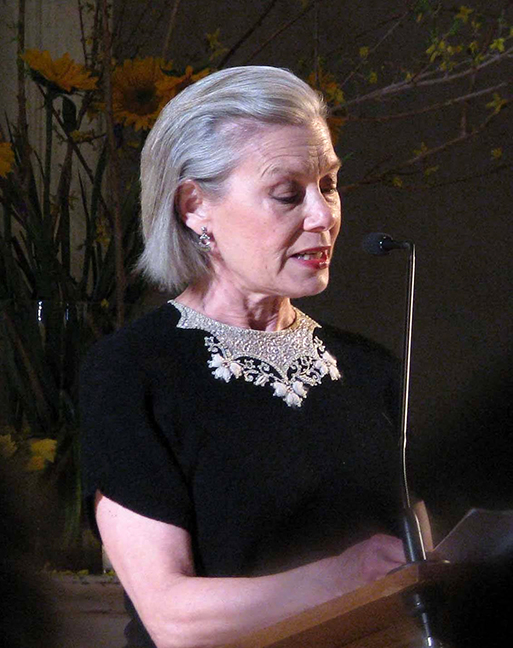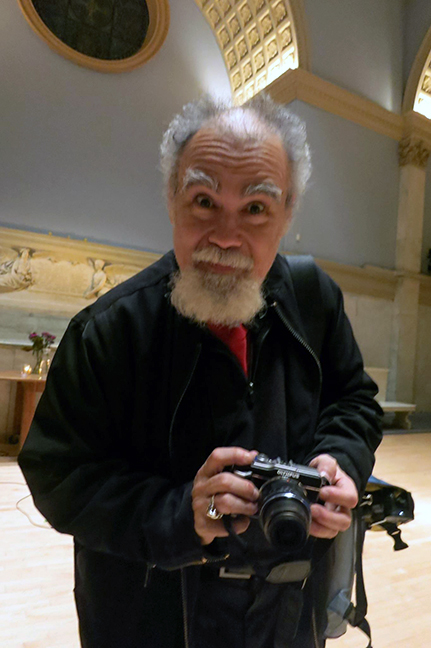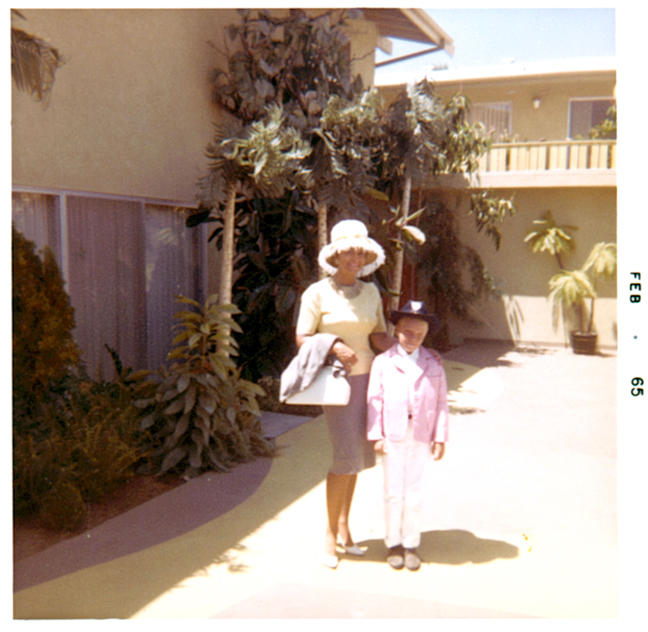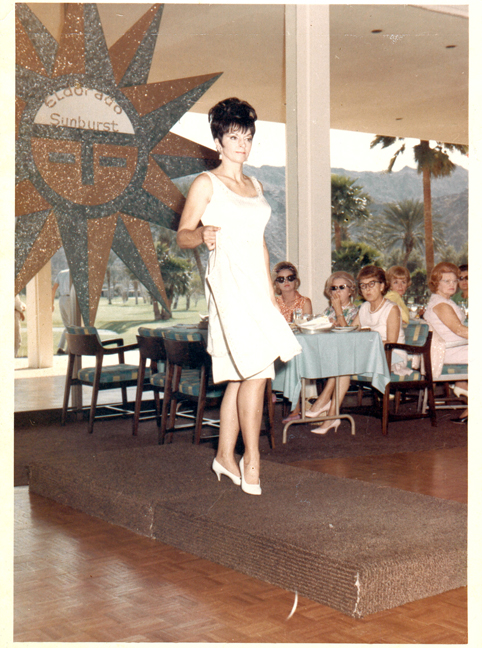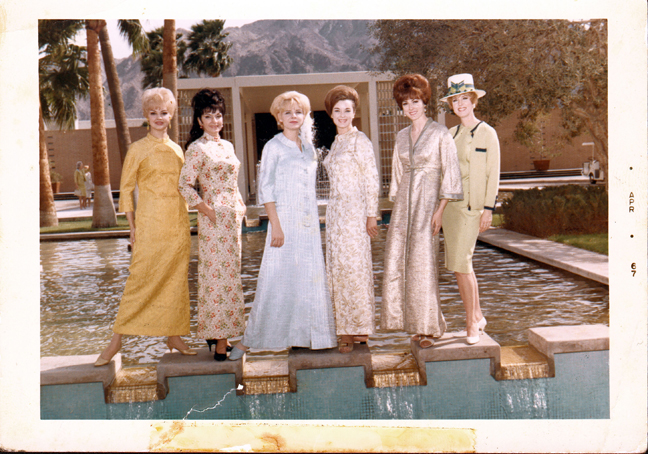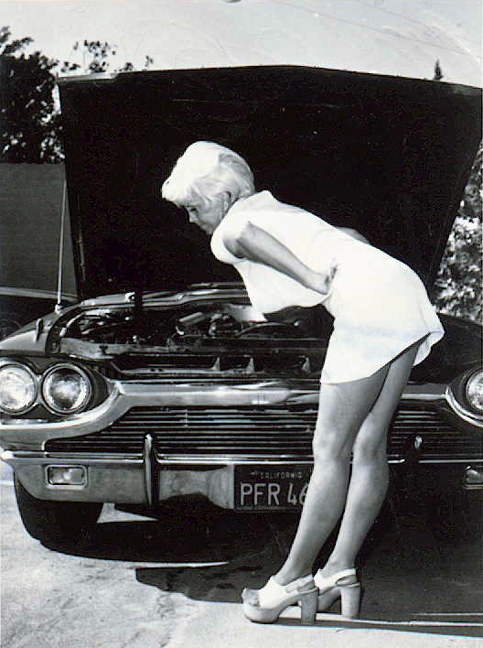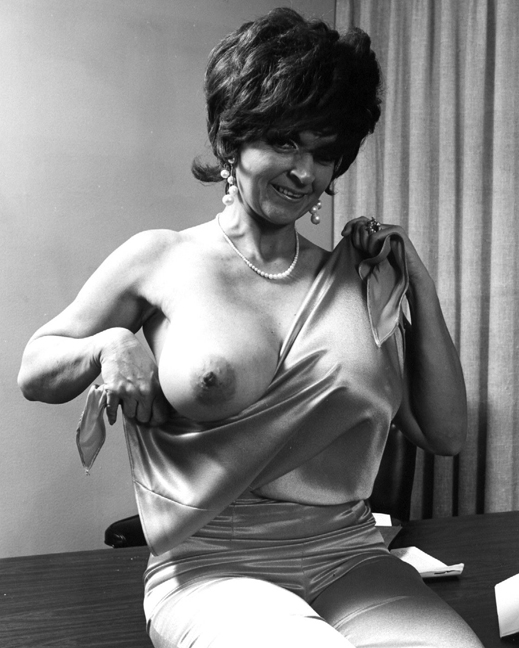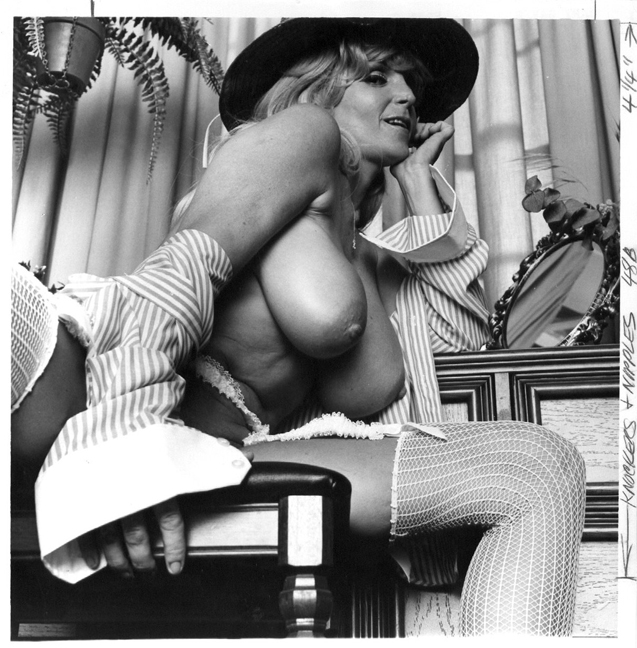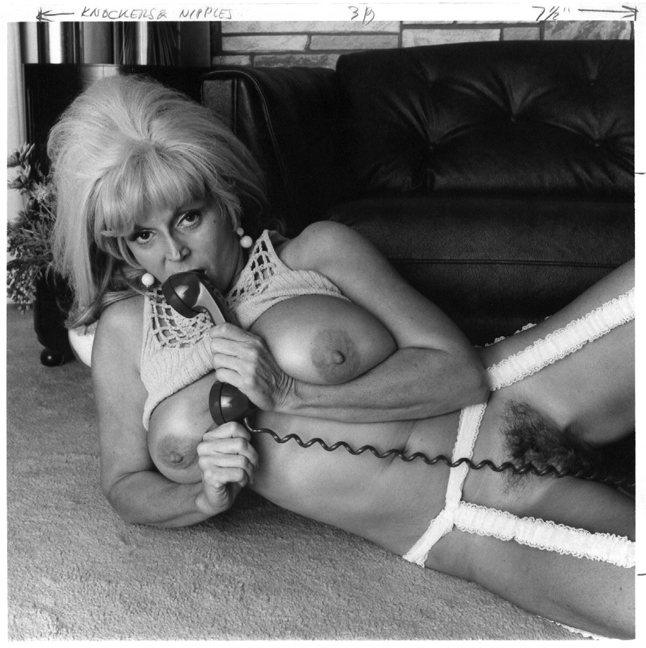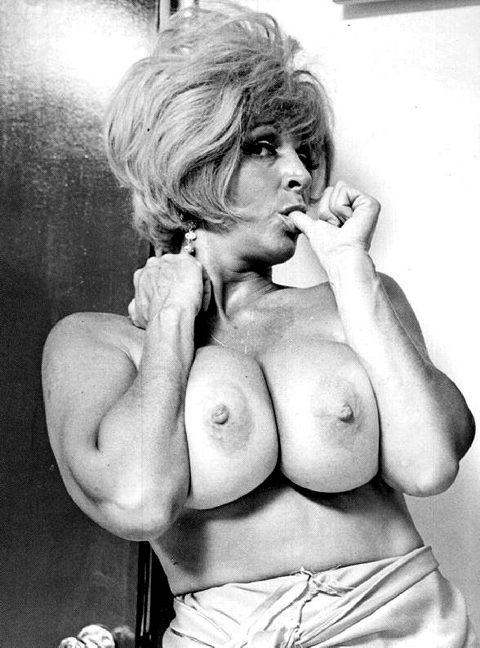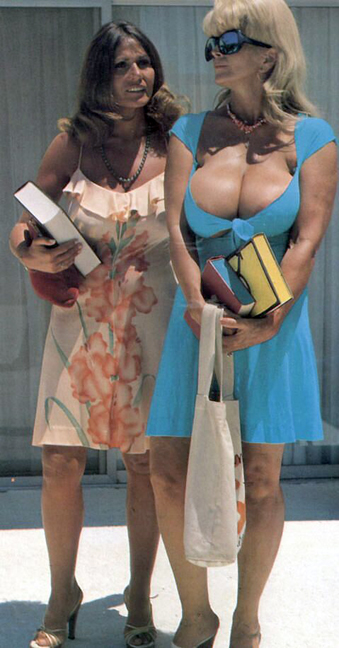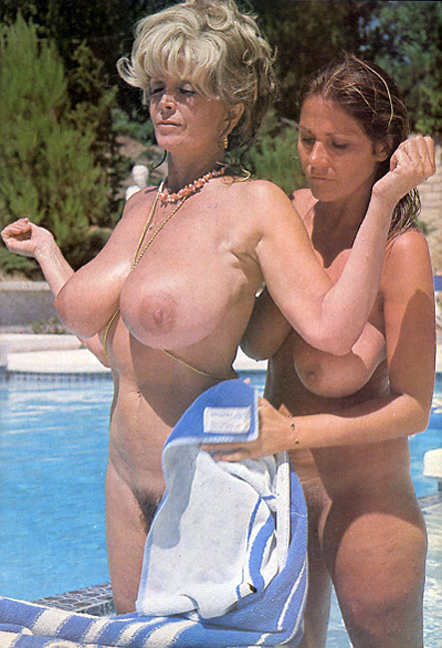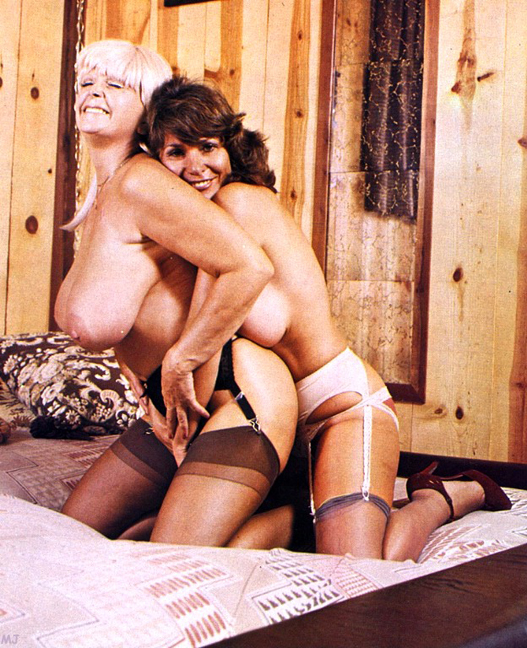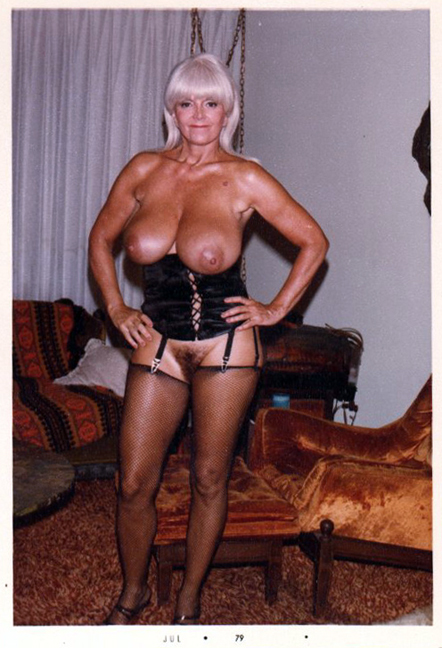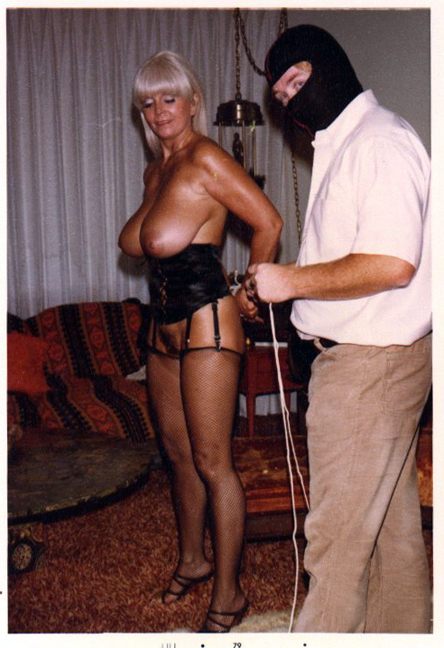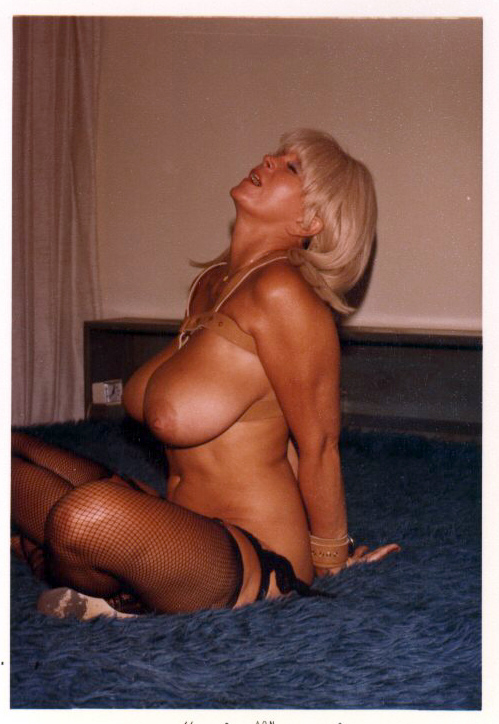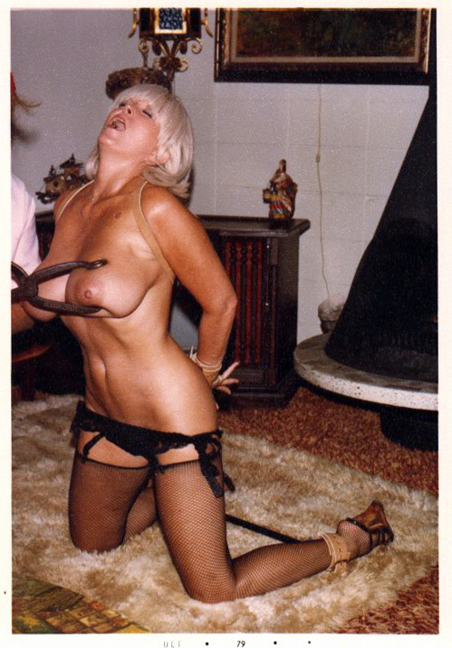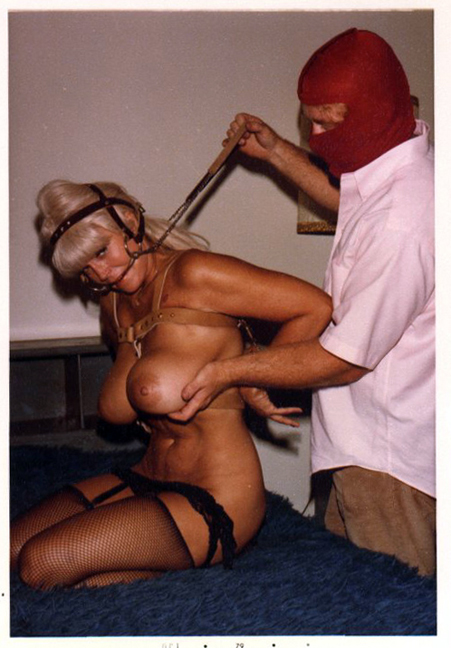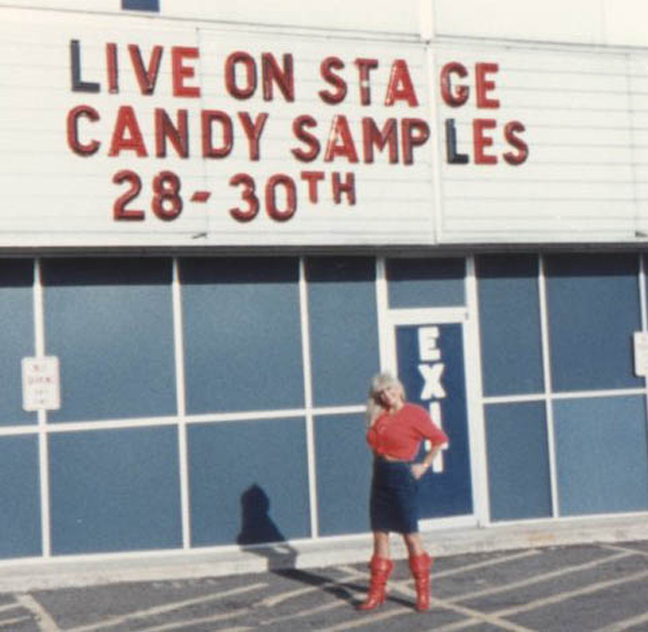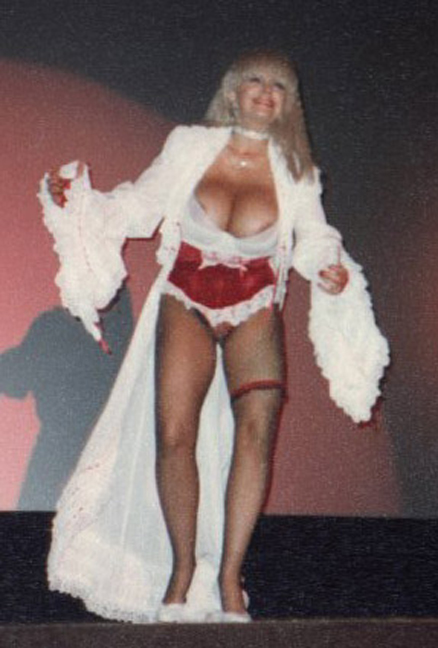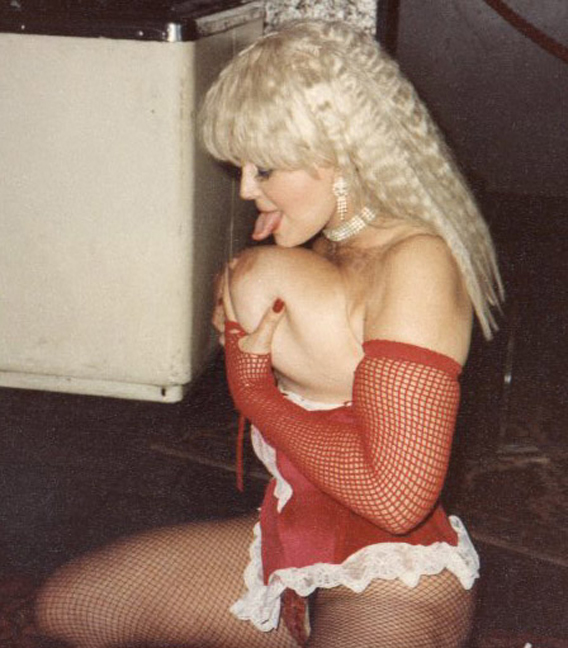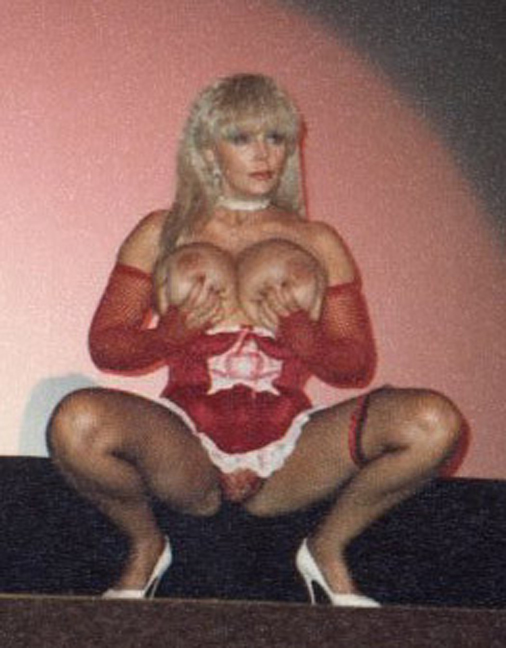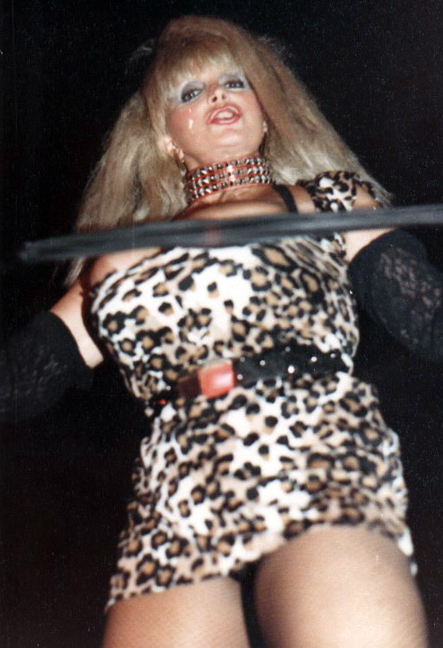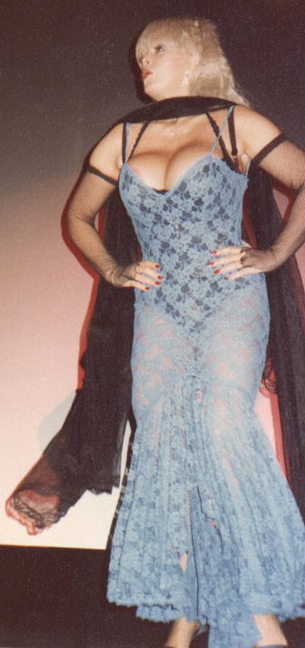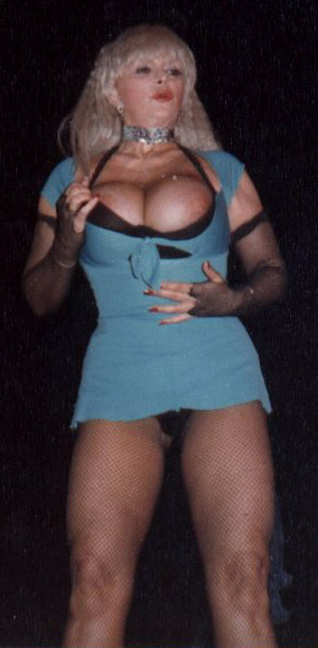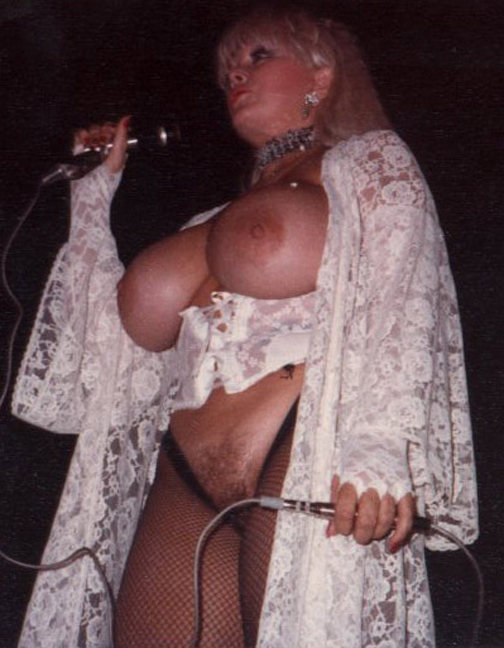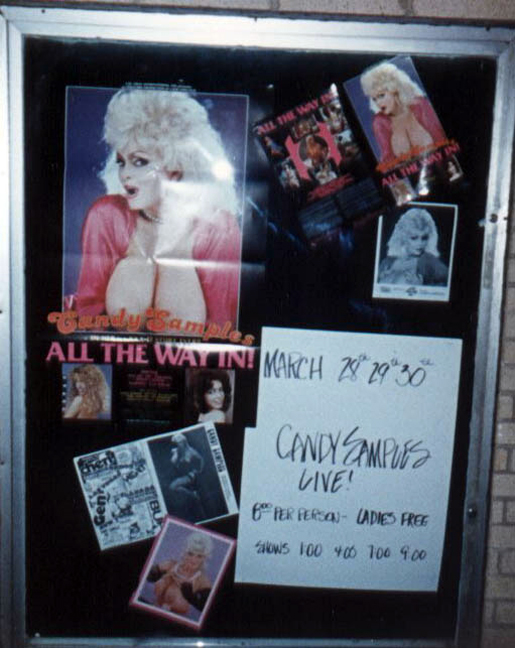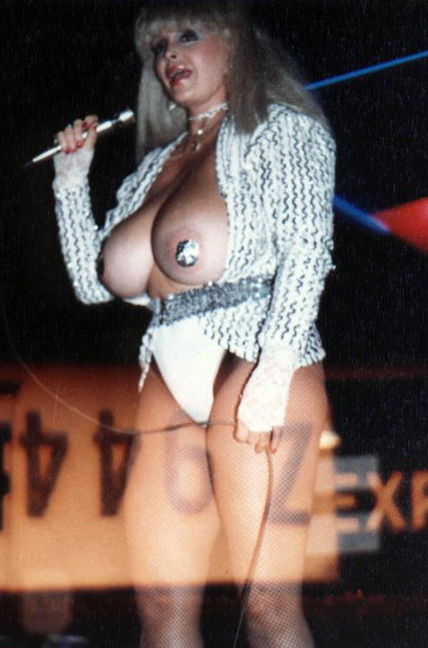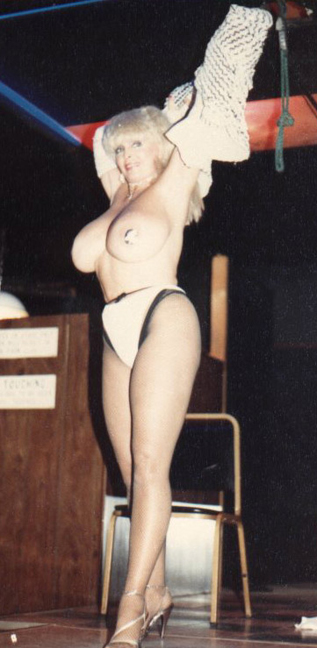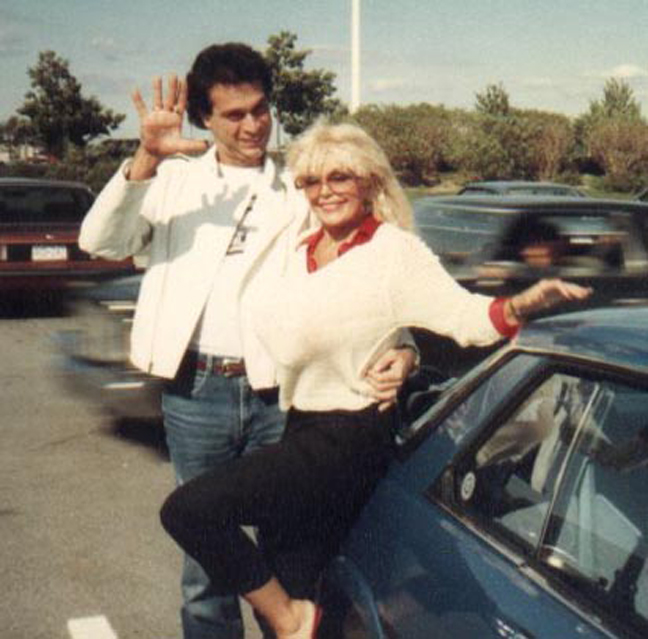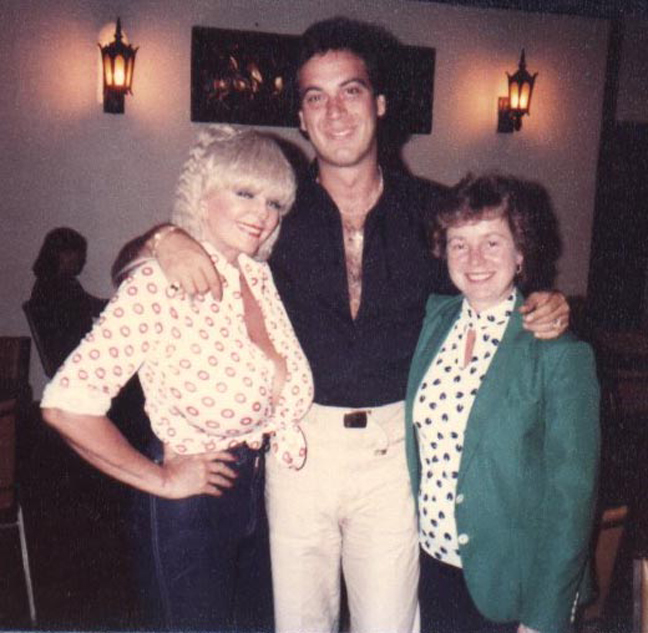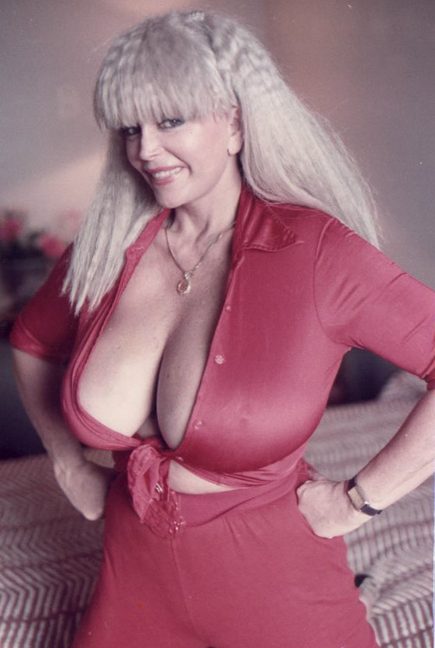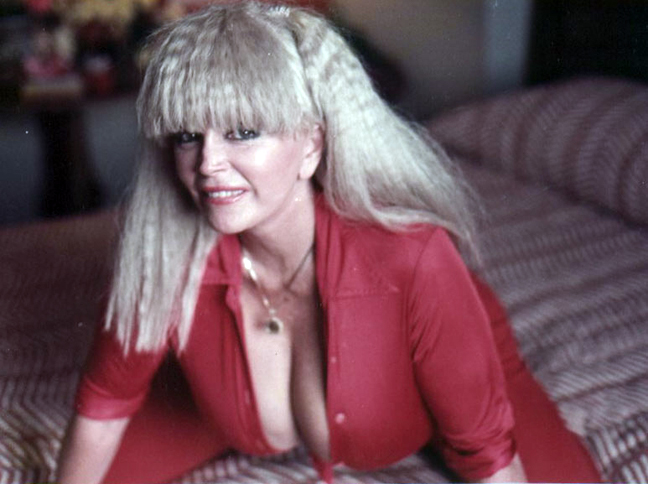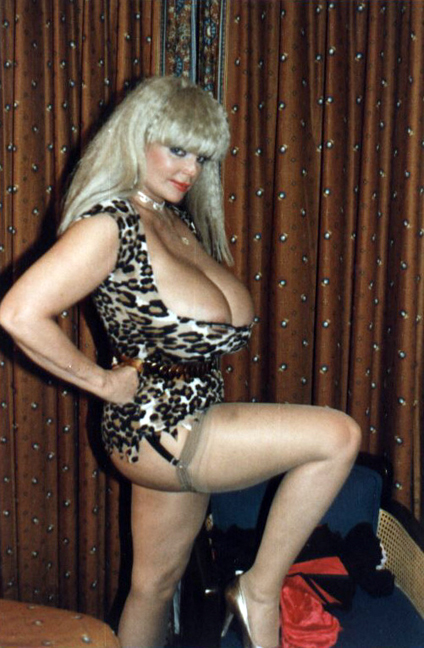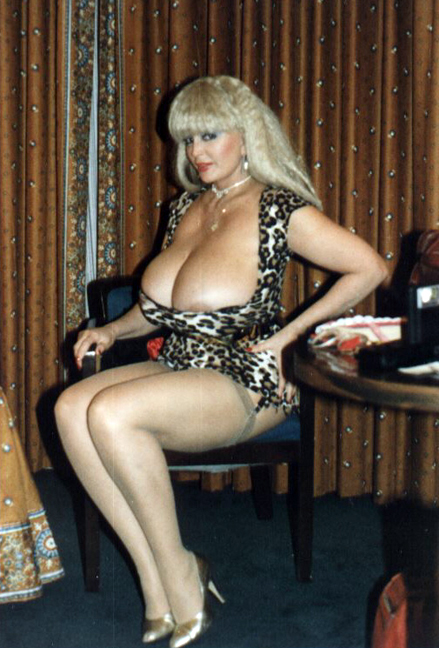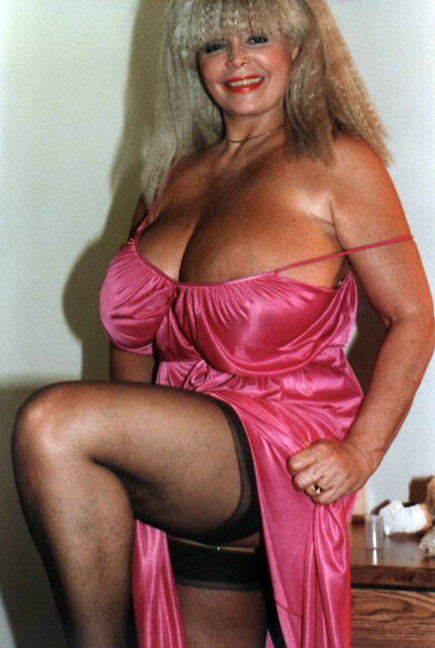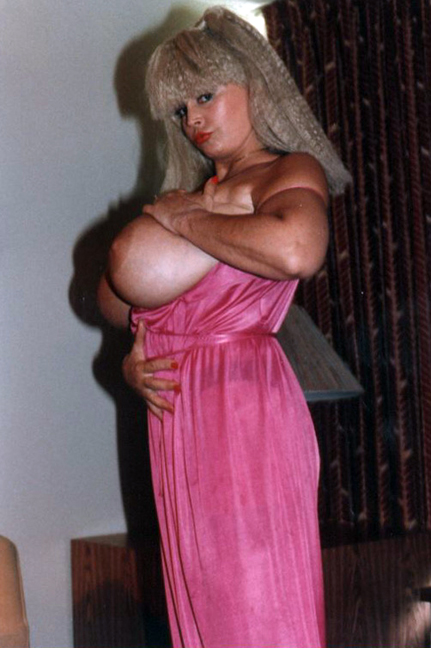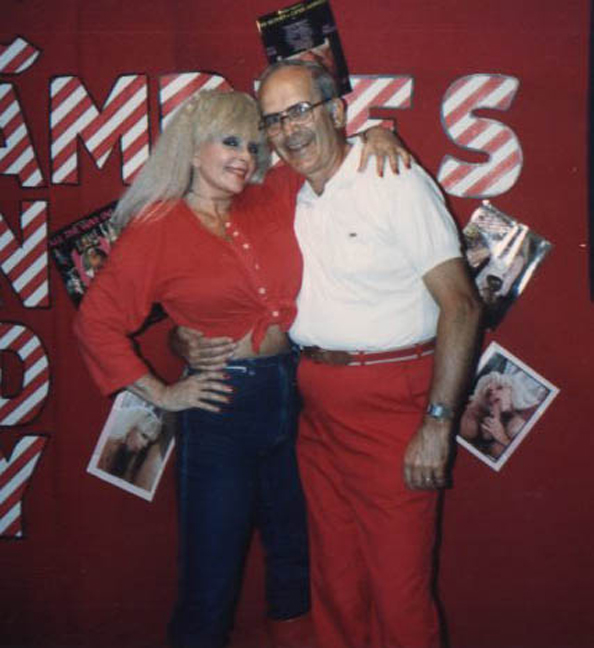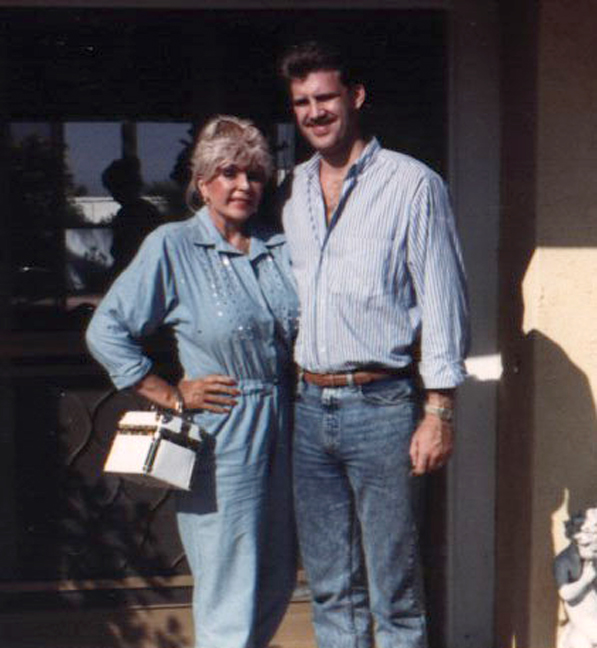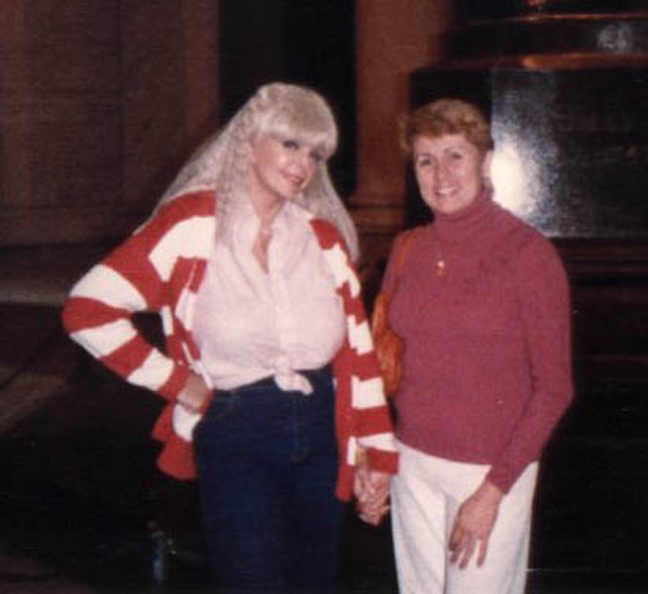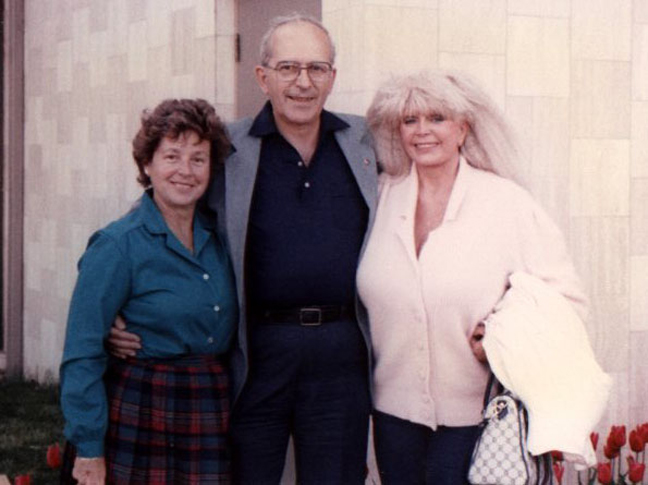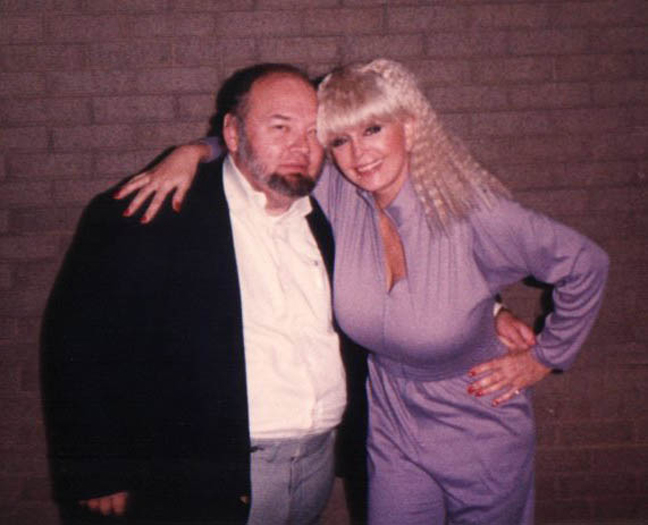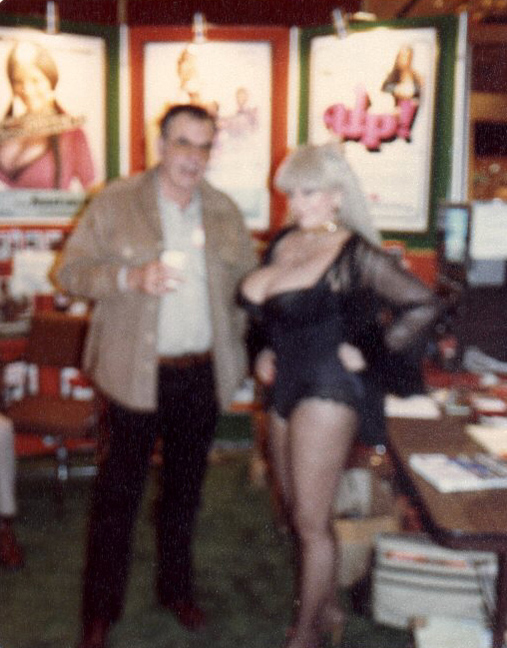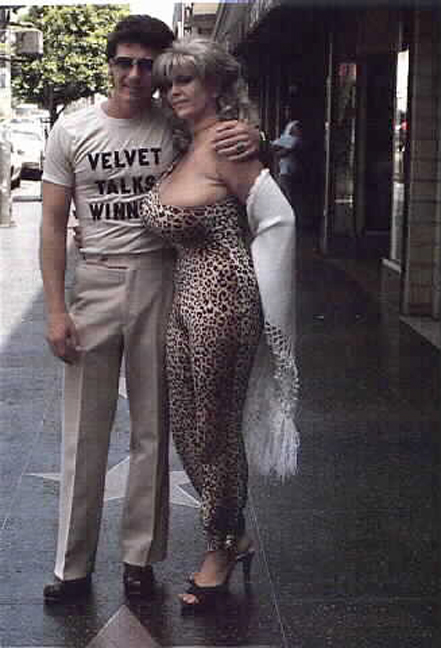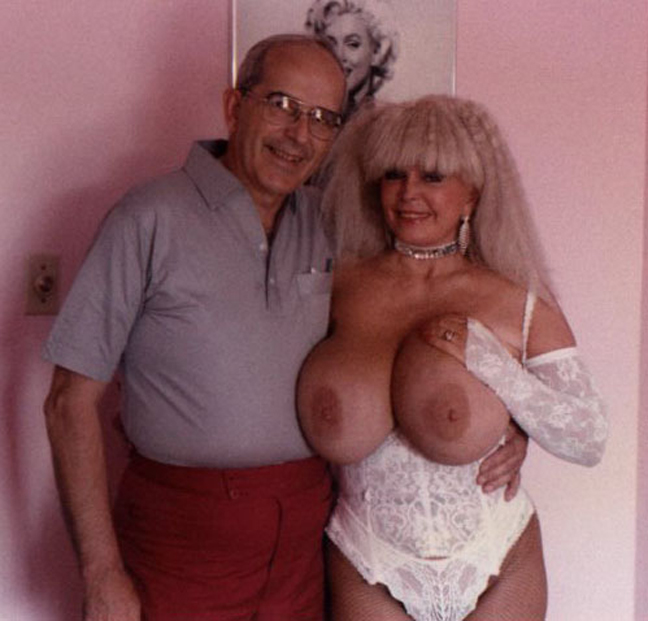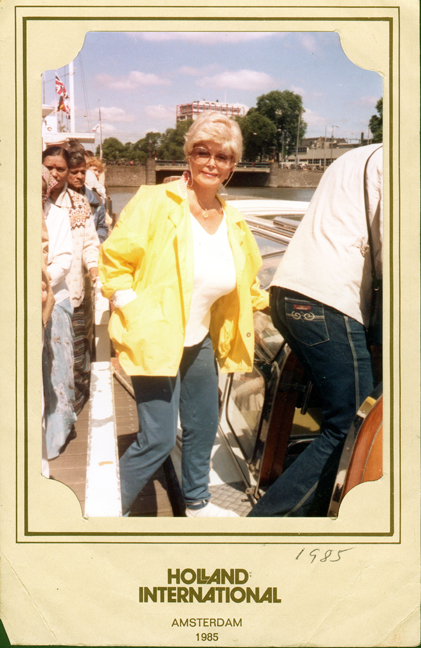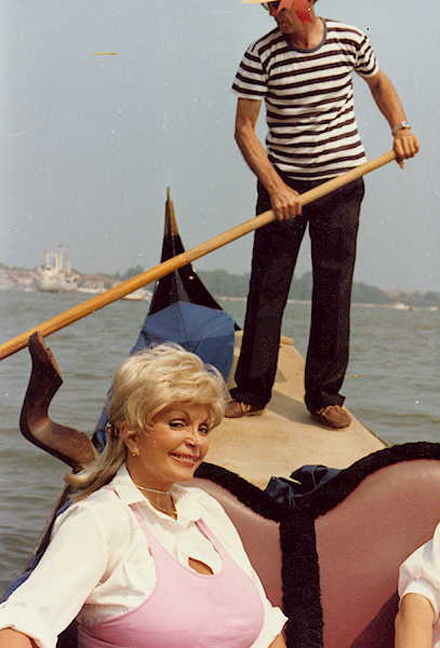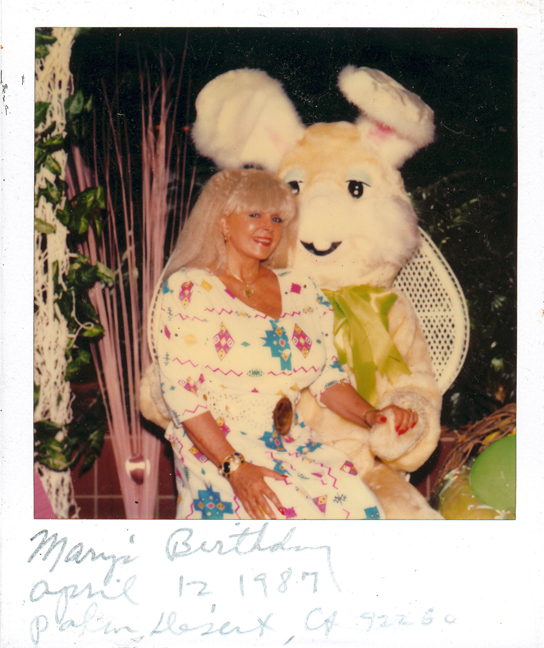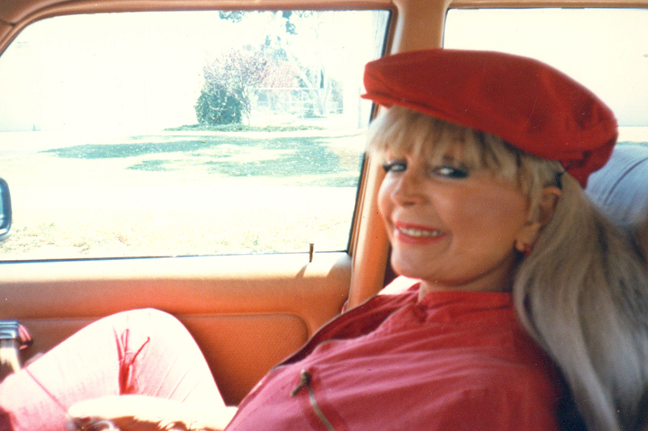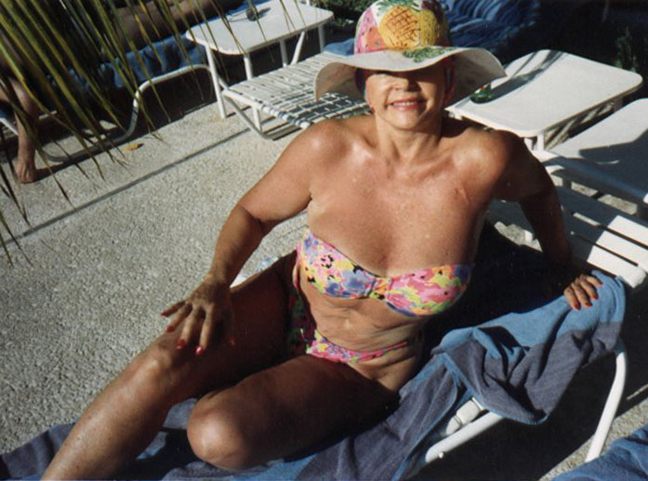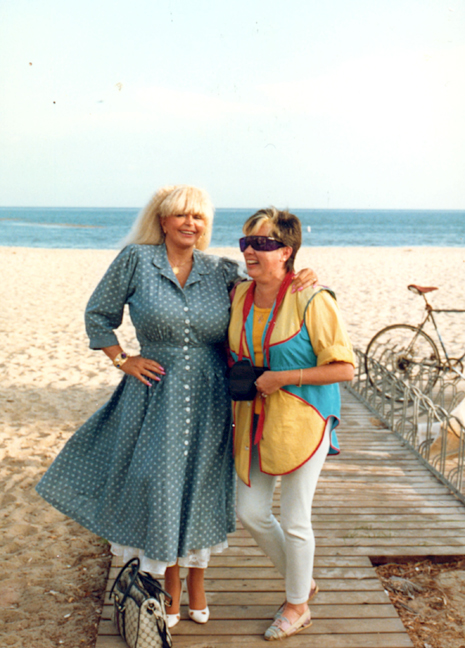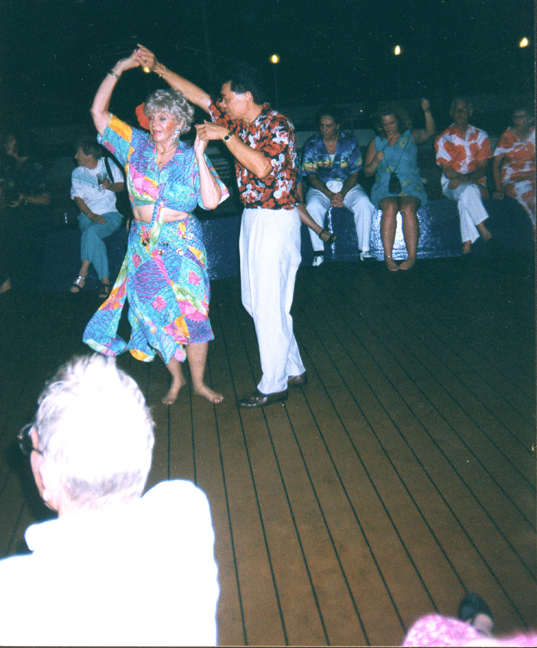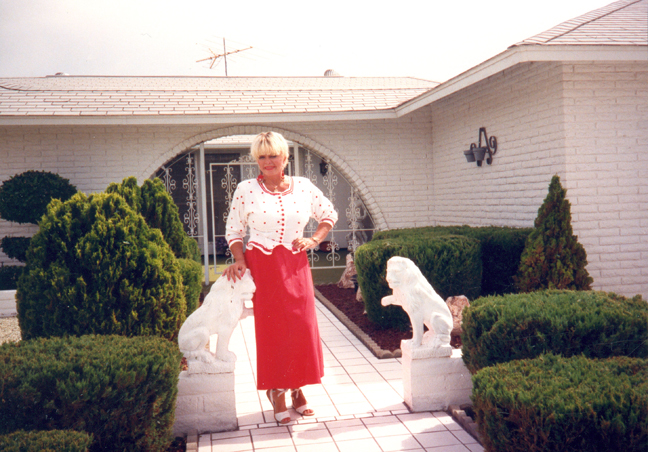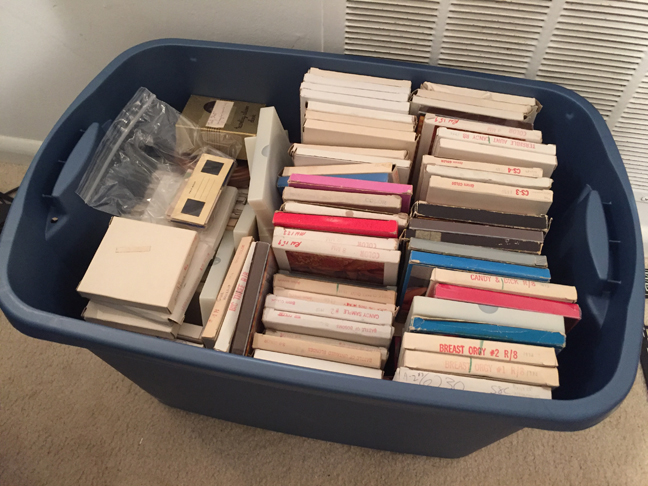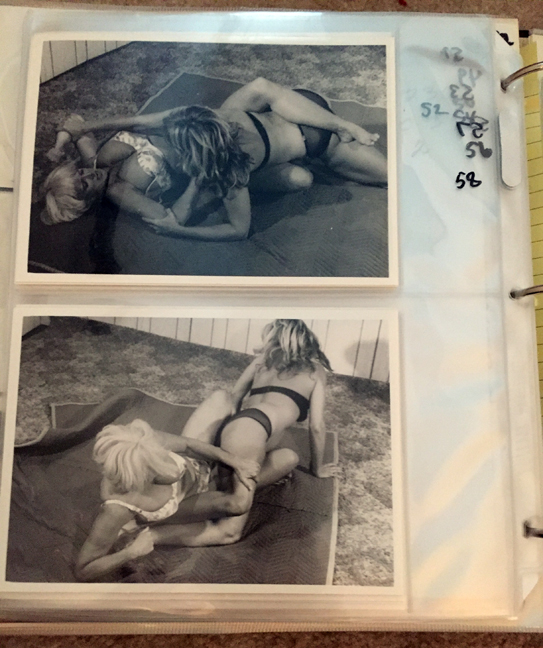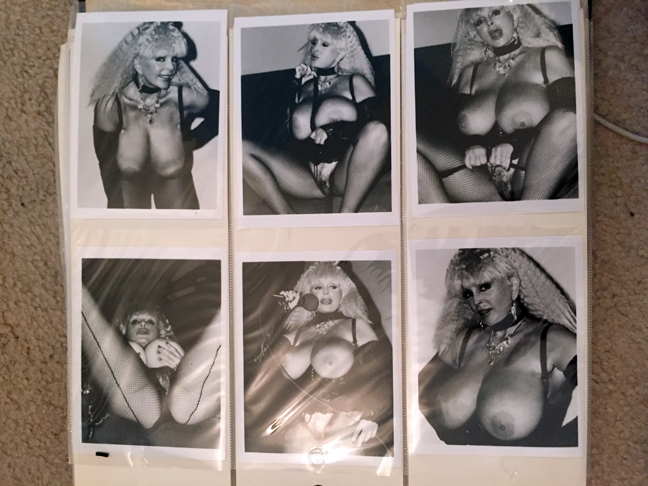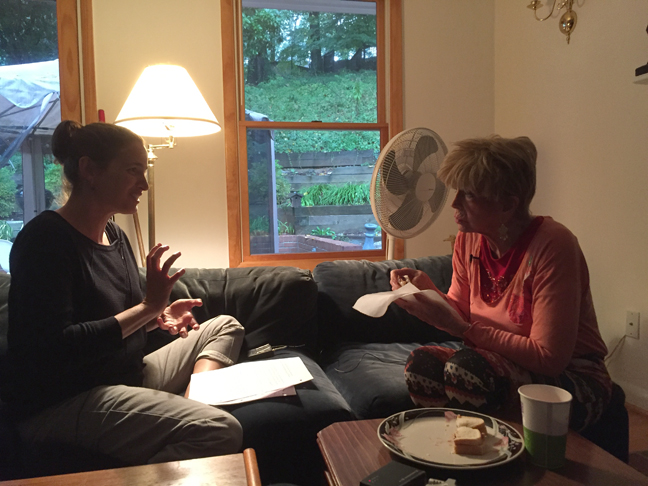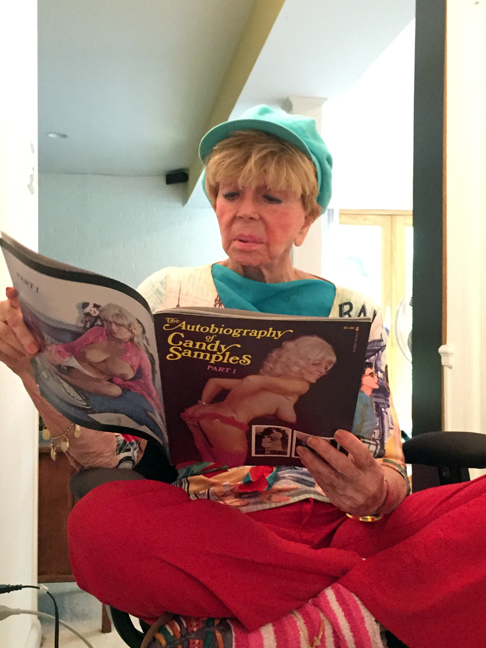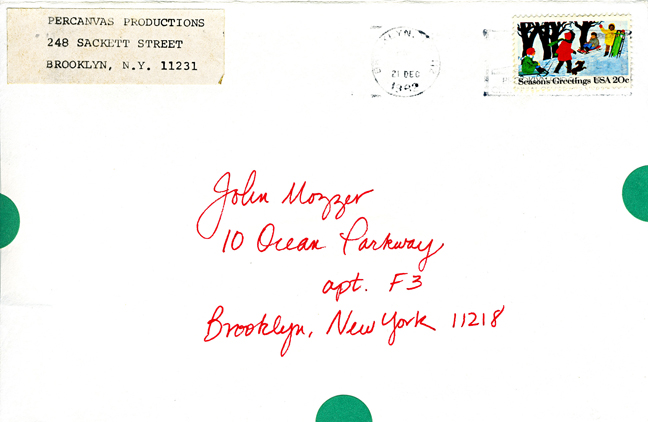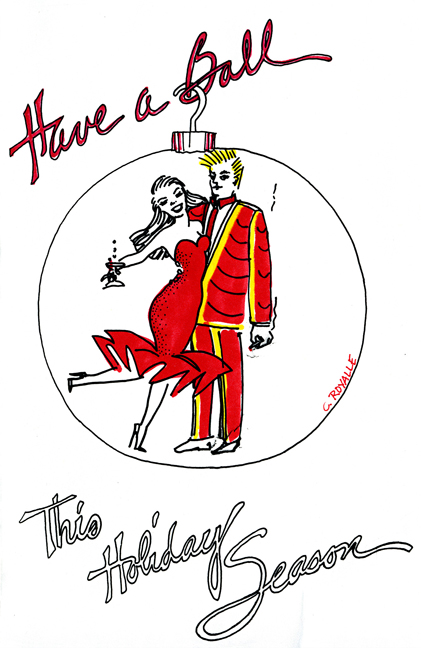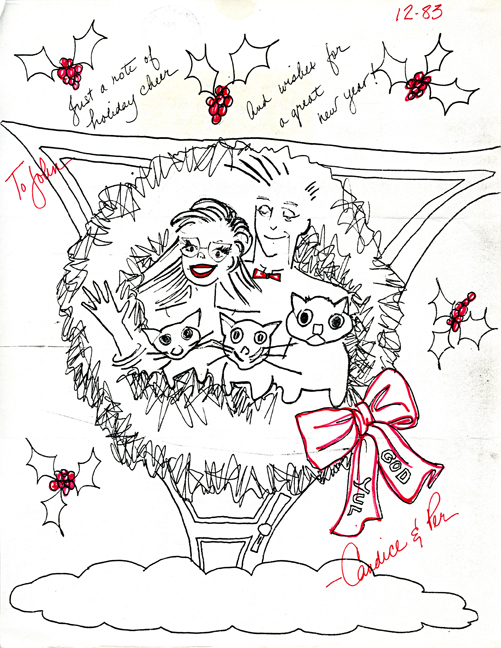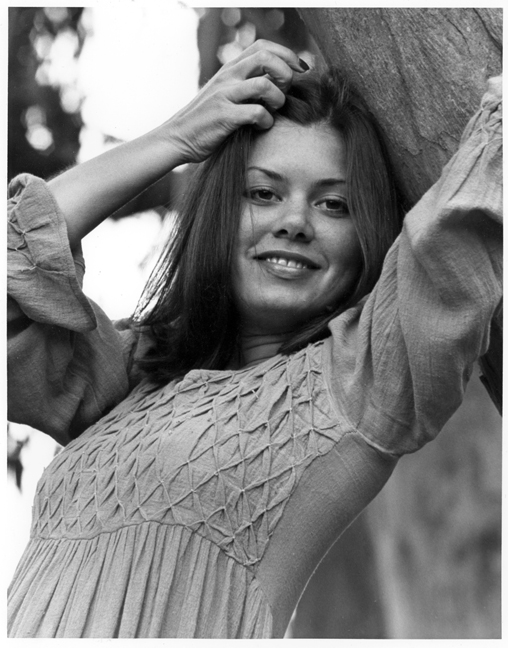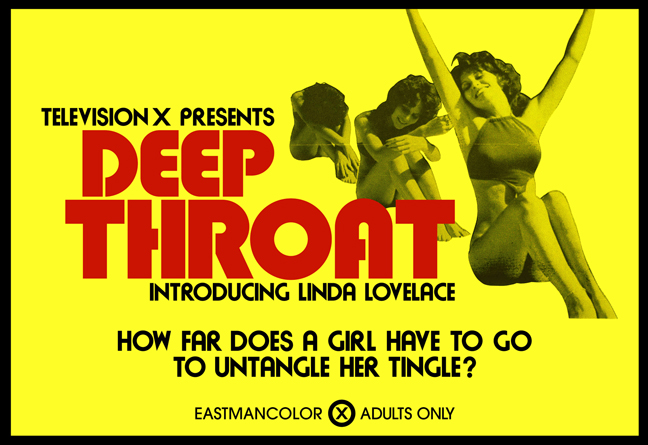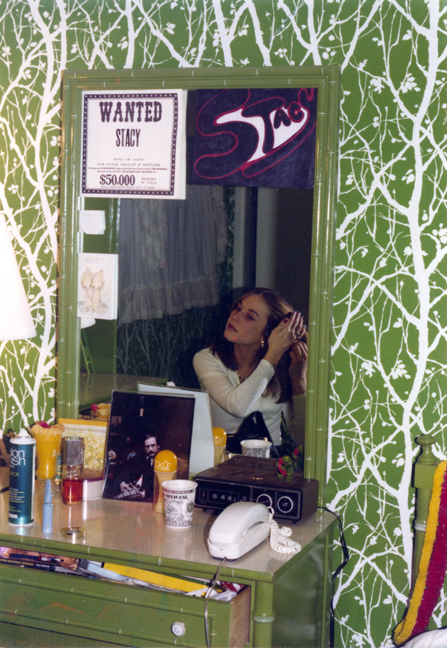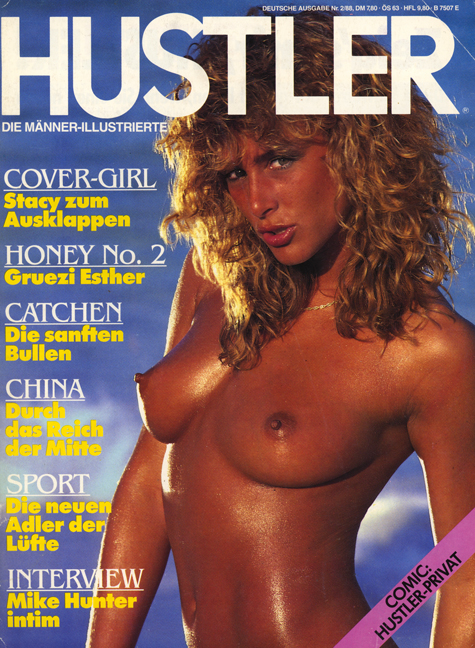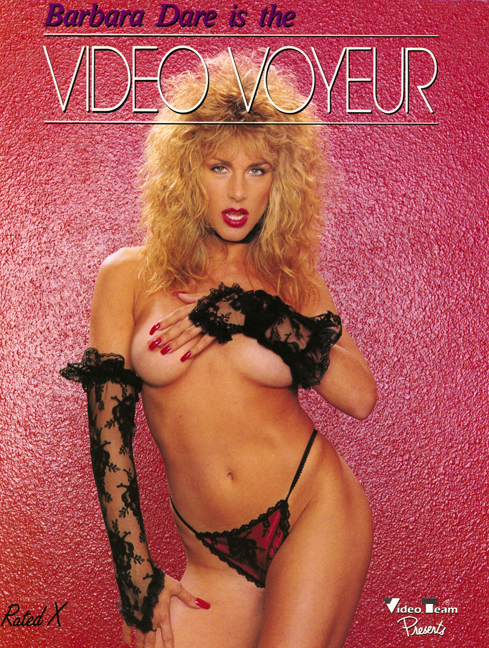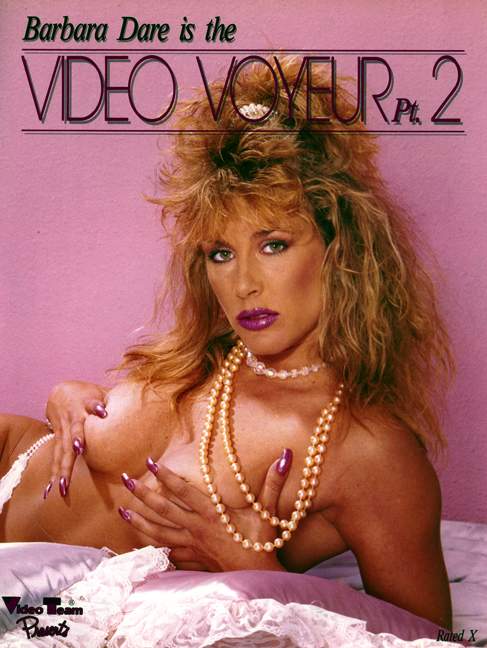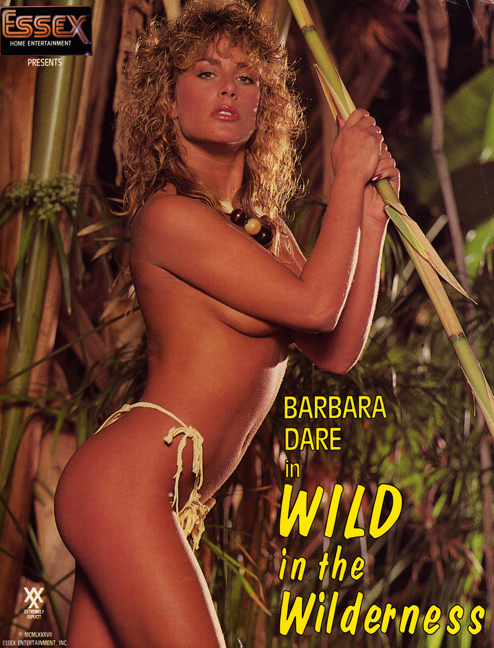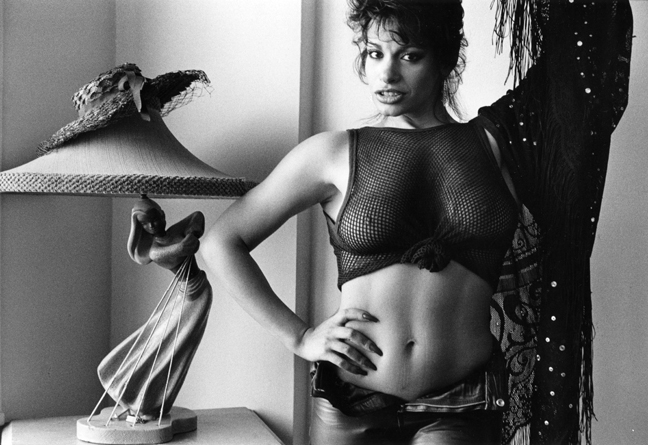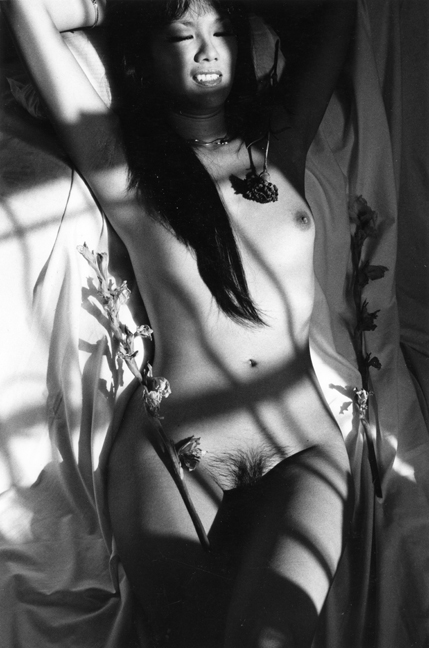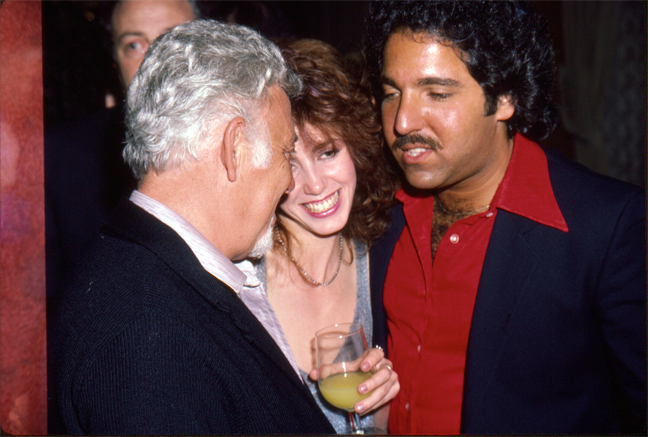Many interviews that have appeared on The Rialto Report have featured people’s fond memories of Shauna Grant. From Richard Pacheco to Roberta Findlay, Billy Dee and many others, people who knew Shauna have spoken about their friendship with her – remembering her wholesome, “girl next door” looks, her fragility, but most of all her sweet and trusting nature.
In 1982, Shauna (born Colleen Applegate) ran away from her small home town in Minnesota with her high school boyfriend. After responding to an ad for Jim South‘s World Modeling, she proceeded to appear in over 30 pornographic films. She was young and insecure and soon developed a drug problem. Tragically, despite the efforts of several people close to her, Shauna killed herself in March 1984.
In this Rialto Report, we present a series of rare and previously unpublished photos of Shauna Grant from various private collections.
As a counterpoint to these pictures, we also re-visit the ‘Frontline‘ documentary on Shauna Grant’s life called ‘Death Of A Porn Queen‘ by re-printing a transcript of the documentary together with screenshots from the program itself.
It was first aired in 1987 three years after her passing, and was one of the first sensationalist exposés of the adult film industry to appear on network television.
Reviews of it were good – the Los Angeles Times described its “sensational storytelling” and praised the “enormously compelling” story told “simply, movingly, effectively and unsensationally.”
Viewed almost 30 years later however, a viewer might feel rather differently. Today it comes across as one of the sensationalist and voyeuristic ‘porn-is-the-problem’ documentaries that fit the Reagan-era neo-puritanism agenda well.
Perhaps an early warning sign was when the network executives changed the name of the original program, ‘Death of an American Girl’, to ‘Death of a Porn Queen’. The filmmakers had nailed their colors to the mast.
An over-the-top voiceover talks of the manipulative nature of the industry. Leading questions solemnly lead the witnesses. Subjects, who are often filmed in grave lighting, are chosen and edited to fit the anti-porn agenda.
In short, the adult film industry of the mid 1980s does not come across well.
Despite these drawbacks, the film is still valuable – in part because it speaks to many of the major players in the story shortly after the events, when the after-effects were still fresh in people’s minds.
This cast of characters includes Bobby Hollander (perhaps the person who emerges least well from this endeavor), Jim South, Jerry Butler, Danielle, Laurie Smith, Jeannette Littledove, as well as several family members and friends of Shauna.
We re-present the transcript of the documentary here to allow you to draw your own conclusions.
________________________________________________________________________________________
Shauna Grant: Rare and Unpublished Photos
![Shauna Grant]()
![Shauna Grant]()
![Shauna Grant]()
![Shauna Grant]()
![Shauna Grant]()
![Shauna Grant]()
![Shauna Grant]()
![Shauna Grant]()
![Shauna Grant]()
![Shauna Grant]()
![Shauna Grant]()
![Shauna Grant]()
![Shauna Grant]()
![Shauna Grant]()
![Shauna Grant]()
![Shauna Grant]()
![Shauna Grant]()
![Shauna Grant]()
![Shauna Grant]()
![Shauna Grant]()
![Shauna Grant]()
*
Shauna Grant: Death of a Porn Queen (1987)
Voice-over:
Tonight on Frontline. She went to Hollywood…
Background male voice:
Just start to bring your jeans down a little bit.
Background male voice:
You look like a million, Colleen.
Voice-over:
…and ended up in a nightmare.
Background male voice:
You look fabulous.
Background female voice:
Colleen Applegate does not like doing sex on film.
Background male voice:
Terrific!
Background female voice:
She hated it.
Voice-over:
A small town girl…
Background male voice:
Like she just came right off the farm.
Background male voice:
She looked like peaches and cream.
Voice-over:
…who killed herself. Tonight on Frontline…
Background male voice:
Great, take the picture!
Voice-over:
…Death of a Porn Queen.
*
Voice-over:
This is where the story ends, Palm Springs, California early in the evening, March 21, 1984. A young woman lay thrashing on her bed with a bullet wound through her temple. A rifle lay beside her.
![Shauna Grant]() Brenda Rosenow (Colleen’s childhood friend):
Brenda Rosenow (Colleen’s childhood friend):
I went over to her and she was laying… There was like two mattresses pushed together on the bed and there was a crease and there’s blood going all the way down the crease but you couldn’t see any blood on her and… (breaks down crying)
Unidentified doctor:
Her condition was helpless, she was comatose and she was going to die.
Police Officer (in police depot):
Could I have the gun on the Applegate shooting please?
(Brings over a large gun.)
Okay, this is the weapon that was found at her side.
Interviewer:
How do you think she shot herself?
![Shauna Grant]() Police Officer (holds gun to temple):
Police Officer (holds gun to temple):
She would have been laying down on the bed, with a gun on the bed or propped on her arm, possibly with her thumb or other finger to the gun and the bullet would have passed through her head and into the wall where we found it.
Voice-over:
She was known as Shauna Grant, a star of X-rated films. Her real name was Colleen Applegate from Farmington, Minnesota. She left home when she was 18. When she died, she was 20.
(Interviewer walks through a gate into an apartment complex.)
Voice-over:
Colleen lived here for a while, an apartment house near Hollywood. In the spring of 1983, a few months before her death, she suddenly moved out.
Interviewer (speaking to a neighbor in the apartment complex):
I wonder if she left anything here?
Ex-neighbor of Colleen:
Yeah. I have some things that I was to send to her mother but I never did. You’re welcome to them.
(Neighbor shows a pile of papers, records, and photographs.)
![Shauna Grant]() Ex-neighbor of Colleen:
Ex-neighbor of Colleen:
Pictures and terrible books, just a lot of pictures. She was very pretty.
(Interviewer pulls out a heads shot of Colleen.)
Interviewer:
That’s a beautiful picture.
Ex-neighbor of Colleen:
Yeah.
Interviewer:
Is that what she looked like?
Ex-neighbor of Colleen:
Yeah. Her hair was long, a little longer than shoulder length, blonde like strawberry blonde, very pretty. And these are just, I guess, her high school things.
Interviewer:
Diploma?
Ex-neighbor of Colleen:
Yeah, diploma, letters, school letters. I guess they’re for cheerleading.
(Interviewer is shown by himself leafing through a stack of Colleen’s documents.)
Voice-over:
High school diploma, old snapshots and Valentines, her confirmation certificate from the Catholic Church. And a copy of Hustler magazine with her picture on the cover. These are like the belongings of two people as though Shauna Grant had kept Colleen Applegate’s things, dragged them with her from place to place and finally left them behind.
When did one person become the other? How does an ordinary small town girl like Colleen become a Hollywood porn queen? Then what happened to her? She shot herself, but why? How did she get so far from home?
*
![Shauna Grant]() Teresa (Colleen’s childhood friend):
Teresa (Colleen’s childhood friend):
She was an everyday girl just like everybody else. She was in cheerleading, I was in cheerleading.
Voice-over:
Teresa was one of Colleen’s closest friends from the 6th grade on.
Teresa (Colleen’s childhood friend):
She always appeared happier than she was. I remember that she was so unpredictable and you never really knew what she was thinking. You never knew what she was going to do next unless she shared it with you.
![Shauna Grant]() Phil (Colleen’s father):
Phil (Colleen’s father):
Colleen was… She was more private, or more inside of herself I think, than our other kids have been.
Voice-over:
Colleen Applegate’s parents Phil and Karen still live in southern Minnesota. Recently, they divorced.
Karen (Colleen’s mother):
I was very strict with Colleen. To me, right is right and wrong is wrong. It still is… but as long as it doesn’t go too wrong, they’re going to do what they want to do anyway.
Phil (Colleen’s father):
I maybe tried to run the house, or I tried to run a house like you do a business and really, that isn’t a good way to run a house sometimes. Maybe I come off that way, but I learned over the years too.
I think when she was going to high school, when she was in… I expected certain things. I realize I was a tough father, I wasn’t an easy father – and I don’t know whether that was a mistake or not because I was just as tough on the other kids too.
![Shauna Grant]() Karen (Colleen’s mother):
Karen (Colleen’s mother):
She was the oldest of five but there was nothing strange or abnormal about her childhood. It was a very obvious childhood. She would love to read, she used to write poems. She wasn’t much of a housecleaner but she loved to cook. Our relationship with Colleen was fine until her junior and senior year and then we had a lot of arguments.
Voice-over:
At about that time, she began to date a boy names Mike Marcell who was 2 years older.
Teresa (Colleen’s childhood friend):
She started liking boys and showing it and she knew that she could get almost anyone she wanted to. I think that’s when she started liking boys.
![Shauna Grant]() Brenda Rosenow (Colleen’s childhood friend) (looking through a high school year book):
Brenda Rosenow (Colleen’s childhood friend) (looking through a high school year book):
Is this her graduation year, Colleen?
Colleen Hare (Colleen’s childhood friend):
Yeah, because it’s ’81.
Brenda Rosenow (Colleen’s childhood friend):
Yeah. Okay, this is the year we graduated and she wrote on the back page, “Brenda, it’s been a long time, hasn’t it?”
Voice-over:
Two of Colleen’s oldest friends live now in southern California, Brenda Rosenow and Colleen Hare. They grew up with her, both went to California at about the same time she did and stayed in touch with her to the end.
Brenda Rosenow (Colleen’s childhood friend) (reading from high school yearbook):
“No matter how far we are apart, we’ll always be close at heart and we’ll always keep in touch even if one of us ends up in dumb fuck Egypt, but anyway, I think I’ve used up enough space. Be good Brenda, keep smiling and don’t do anything I wouldn’t do. Love, Leena.”
God, it’s been a long time since I read that.
![Shauna Grant]() Colleen Hare (Colleen’s childhood friend):
Colleen Hare (Colleen’s childhood friend):
I think she was a little bit different. She had different ideas, I think, than everybody else. She had these dreams of what she wanted to do and she wanted to be a model. Back then, we didn’t really have set dreams or goals – and she did.
Brenda Rosenow (Colleen’s childhood friend):
It was small town, only a population of, what was it, 4,800 people at the time?
Colleen Hare (Colleen’s childhood friend):
Yeah and now, it’s even less. It’s a small town.
![Shauna Grant]() Brenda Rosenow (Colleen’s childhood friend):
Brenda Rosenow (Colleen’s childhood friend):
Everybody knew what you were doing before you did it, and there was never really anything to do.
Voice-over:
Colleen stayed in Farmington a while after high school working first as a cashier then as an employee of the telephone company.
There, one night in December, she swallowed a bottle of pills. She was rushed her to the hospital.
Phil (Colleen’s father):
We took her to the emergency and they pumped her stomach. It was basically… that it wasn’t so much that she wanted to kill herself as it was that she wanted some attention. And she thought that was a way of getting it.
Interviewer:
Did you and Colleen ever talk about it?
Phil (Colleen’s father):
No. To be honest, no – I don’t think we did. I don’t think we really sat down and talked about it. We went to the counselor with her as a family.
Karen (Colleen’s mother):
They had one group session with the whole family. All of us were in there and they tried to get us to talk and of course, we’re all sitting there looking at each other and nobody is saying much.
I was very angry because I still don’t feel she took that because… of physical… although maybe it was… maybe that was the beginning sign and I didn’t know it… of a problem. I thought she did it for attention.
After she took the pills, living in a small town can really be the pits sometimes. A lot of people were talking about it and a lot of people were on her case. She wanted to get out of here.
Voice-over:
Colleen and her boyfriend Mike Marcell headed west.
Interviewer:
Why do you think she went to California?
Phil (Colleen’s father):
To be somebody.
Voice-over:
Los Angeles that first spring was no more fertile ground for Colleen’s vague ambitions than Farmington, Minnesota had been.
![Shauna Grant]() Brenda Rosenow (Colleen’s childhood friend):
Brenda Rosenow (Colleen’s childhood friend):
All I know was that I had talked to her a couple of times and neither one of them was having good luck finding a job. Mike was getting real upset and he wanted her to find a job because he couldn’t get a job. He found… From what she told me, he’s the one that found that ad for modeling.
Colleen Hare (Colleen’s childhood friend):
It was just in the newspaper.
*
![Jim South]() Jim South (owner of World Modeling) (speaking on the phone):
Jim South (owner of World Modeling) (speaking on the phone):
It’s a two girls, one guy simulation. Yeah, there’s no colored guys, hello? Okay, he needs you at 10am Friday.
Voice-over:
This is the man Colleen went to see in the spring of 1982. His name is Jim South.
Jim South (owner of World Modeling) (speaking on the phone):
Have you got a pencil, and can you write this early in the morning?
![World Modeling]() Voice-over:
Voice-over:
He runs an agency called World Modeling.
Jim South (owner of World Modeling) (speaking on the phone):
What we do is that we’re licensed to get you work with professional photographers. The majority of work that we get is nude photographic modeling. The pay does run from $100 a day up to $1,500 a day depending on who’s shooting you.
Jim South (owner of World Modeling) (interviewing a prospective female performer called Kim):
Now, the 2 different type of shootings we have, we have single girl, you modeling alone like you see in Penthouse. We also have simulation, you lucky devil.
Voice-over:
A documentary crew led by Wendy Apple shot these scenes of South as he interviewed a new model named Kim.
Jim South (owner of World Modeling) (interviewing a prospective female performer called Kim):
You are touching, you do like you’re doing something but you’re not.
![Wendy Apple]() Wendy Apple:
Wendy Apple:
Jim South is indeed an agent.
Voice-over:
Apple was making a film entitled ‘Fallen Angels’.
Wendy Apple:
He is absolutely the medium, the way in which girls who know nothing about Hollywood or movies or pornography come into the porno industry. They have to pass through him, they don’t have to, but that’s the way his business is set up.
![Jim South]() Jim South (preparing to take a Polaroid of Kim, a nude model):
Jim South (preparing to take a Polaroid of Kim, a nude model):
Give me a shot of you standing close to the stool with your right foot on the bottom ledge…
Wendy Apple:
He said that he could get new girls work very fast. There’s always a job for a new girl.
Jim South:
…I’ll be right over there, taking the Polaroid, okay?
Kim (nude model auditioning):
Okay.
Jim South (behind the camera):
Thank you. Hi, now twist a little bit more around…
Voice-over:
South showed his Polaroids of Colleen Applegate to Penthouse photographer Steve Hicks.
![Steve Hicks]() Steve Hicks (Penthouse photographer):
Steve Hicks (Penthouse photographer):
I don’t equate what I do with X-rated films whatsoever. What I do is I photograph women in an attempt to create beauty out of their bodies.
Colleen was a beautiful girl and I think very unaware of it. She was the type of girl who once she walked in, she’d look in many ways like she just came right off the farm, but in makeup, she was a very beautiful girl and she really took to modeling quickly.
It’s unfortunate that Mother Nature put 18 year old girls on this planet with beautiful bodies. Because the mind of a typical 18 year old girl is not prepared to make the right decisions in this town with these opportunities.
Voice-over:
Hicks advised Colleen to get out of nude modeling quickly because it leads downhill. After all the magazines have used her, the only thing left is X-rated movies.
She ignored the advice and soon was posing for raunchier magazines.
Colleen Hare (Colleen’s childhood friend):
She invited us out so we went to her house for the weekend and…
Brenda Rosenow (Colleen’s childhood friend):
That’s the first time we saw the pictures and all that.
Interviewer:
What sort of pictures were they?
Brenda Rosenow (Colleen’s childhood friend):
Shocking pictures. We didn’t expect… we didn’t know. When she said modeling and then she finally told us it was nude, well… you think of maybe Playboy… and then the pictures we saw though were like from…
![Shauna Grant]() Colleen Hare (Colleen’s childhood friend):
Colleen Hare (Colleen’s childhood friend):
More hardcore type pictures.
Brenda Rosenow (Colleen’s childhood friend):
Yeah, Erotica and what’s that other magazine? Velvet, stuff like that. And then she just had the Polaroids, the instant pictures of her and some guys… (laughs). She pulled them out, started showing them us and we just looked at each other. Our mouths were like down to our knees.
She didn’t explain. She’d been covering up. She didn’t come right out and say, “Well, I was doing this with this guy and I did this with this girl.” You could tell she felt bad because she wouldn’t tell us the whole story. And then it even went as far as her trying to convince us to do it with her.
Colleen Hare (Colleen’s childhood friend):
So it wouldn’t be as bad.
Brenda Rosenow (Colleen’s childhood friend):
Yeah.
Interviewer:
What would she say to do that?
Colleen Hare (Colleen’s childhood friend):
She had an appointment set up with her manager for us…
Brenda Rosenow (Colleen’s childhood friend):
…for me and her…
Colleen Hare (Colleen’s childhood friend):
…to go in, and the whole bit, and we’re just like, “Well, I don’t think so.”
Brenda Rosenow (Colleen’s childhood friend):
She said it’s easy and…
Colleen Hare (Colleen’s childhood friend):
She’s… “Well, just go talk to him. It’s good money, you can just do it like on the weekends, come out here and you don’t have to take your clothes off if you don’t want to and…”
Brenda Rosenow (Colleen’s childhood friend):
…seeing the pictures, you knew you would have to take your clothes off.
Interviewer:
How important do you think it was to Colleen that you approved of what she was doing?
Brenda Rosenow (Colleen’s childhood friend):
I think it was very important to her.
Colleen Hare (Colleen’s childhood friend):
Very important to her.
Brenda Rosenow (Colleen’s childhood friend):
Because I think she knew that nobody that was in her life before did approve.
Steve Hicks (Penthouse photographer):
You take a typical girl that’s used to working at McDonald’s or in a shoe store making a minimum wage and suddenly, she’s given the opportunity to get made up and be in front of people that tell her she’s beautiful and make as much money in a day than she was making in 3 weeks. They change and that’s sad.
*
![Shauna Grant]() Voice-over:
Voice-over:
Mike Marcell, Colleen’s boyfriend soon left her and returned to Minnesota where he spread the news that Colleen was involved in pornography. Marcell won’t discuss it now. He says he just doesn’t care about her. The Applegates heard the stories about her daughter and flew at once to Los Angeles.
Phil (Colleen’s father):
We knew that she was working through this World Model Agency so we went up to the offices up there and saw Jim South and saw what was going on. We asked if Colleen worked for him and he said yes, and then he said, “Well, she’s right in here,” and he threw this book at us. He opened it up and there was nude photographs of Colleen among other girls and I guess you could come in and pick who you wanted to model for you. That’s how they… And we said, “How can you let an 18 year old girls involved in this?” “Well, she’s 18 and she’s of age and consent,” and blah, blah, blah.
Brenda Rosenow (Colleen’s childhood friend):
They wanted her to come home and they were ordering her… giving her no choice which I think was a mistake – because she didn’t listen to them in high school, why would she listen now?
Interviewer:
Did that cause a rift between you?
Karen (Colleen’s mother):
Yes. I didn’t hear from her for, it seemed like an eternity, but it was probably two months… didn’t hear a word and I didn’t know where to call her. We left there and then. All the way home, I kept saying, “Why did we do that? We could have found out where she was living, found some…” I didn’t know how to find her.
![Shauna Grant]() Jim South (speaking on the phone with Colleen sat across from him in his office):
Jim South (speaking on the phone with Colleen sat across from him in his office):
Okay. I’m at 4523 Van Nuys, Boulevard. Now it is a small office building, it’s suite 203…
Voice-over:
By this time, Colleen had posed for almost every men’s magazine.
Jim South (speaking on the phone with Colleen sat across from him in his office):
Could you come in tomorrow? Well, what’s convenient for you?
(Camera close up on Colleen’s face as she waits for Jim South to finish speaking on the phone.)
![Shauna Grant]() Voice-over:
Voice-over:
Producer Wendy Apple happened to filming in Jim South’s office when Colleen dropped in.
Jim South:
“1:30, that’s when I get back from lunch. Okay, have a good time and I’ll see you tomorrow. Bye-bye.”
(Addresses Colleen) Okay, well you and I are going to undress (they laugh) and we’re… You don’t have enough money. Just be nice.
Colleen Applegate:
Who doesn’t have enough money? You don’t have enough money.
(Phone rings.)
Jim South (answers phone):
World Modeling. Okay, what’s the name of the paper, please, you saw the ad in?
(Camera close up on Colleen’s face as she waits for Jim South to finish speaking on the phone.)
Voice-over:
Colleen was in South’s office again when an adult film director named Bobby Hollander came in looking for actresses for his next film.
![Bobby Hollander]() Bobby Hollander:
Bobby Hollander:
I wanted to use new girls who were just making the turn over. I didn’t want to use a first timer and Colleen had done a piece prior to the Paper Dolls, just one. We sat and talked and she was wearing jeans, no shoes and a sweatshirt, and sitting on a tabletop. I just got good vibes from her and she received good vibes from me.
I said, “This is going to be easy. It’s all a matter of dollars and cents now.”
She said, “Well, I don’t know about that.”
I said, “Well, what you don’t know about? Don’t be ashamed to ask me because I like you. I don’t want to take you to bed. Let’s be friends.”
In this business, she felt, “Wow! There’s somebody that doesn’t want to grab me.” I’ve been in this a while. Those days, they’ve passed me already. You don’t have to sleep with anyone to get in the film. You have to sleep with them on the film.
*
Bobby Hollander (interviewing Colleen Applegate poolside on an adult film set):
Shauna, how old are you?
Colleen Applegate:
I’ll be 20 in a week.
Bobby Hollander:
You’ll be 20 in a week.
![Bobby Hollander]() Colleen Applegate:
Colleen Applegate:
Mm-hmm (affirmative).
Bobby Hollander:
I thought you’re going to be 19.
Colleen Applegate:
No. I am 19. I’ll be 20.
Bobby Hollander:
Oh, and how long have you been a Paper Doll?
Colleen Applegate:
A Paper Doll?
Bobby Hollander:
A model, a cover girl, a centerfold.
Colleen Applegate:
About two months.
Bobby Hollander:
Two months.
Colleen Applegate:
Mm-hmm (affirmative).
Bobby Hollander:
Did anybody twist your arm to get into the business?
Colleen Applegate:
No, not at all. It was all my idea.
Bobby Hollander:
Really?
Colleen Applegate:
Uh-huh (affirmative).
Voice-over:
This is a scene from that first scene Colleen did with Bobby Hollander. He renamed her Shauna Grant. She was not 19 but 18 at the time.
Bobby Hollander:
Are you still a virgin?
Colleen Applegate:
No, are you kidding?
Bobby Hollander:
How old were you when you lost your virginity?
Colleen Applegate:
Almost 17.
Bobby Hollander:
Almost 17. You almost lost it or you did lose it when you were almost…
Colleen Applegate (laughs):
I did lose it when I was almost 17.
*
Bobby Hollander:
I said to her, “You have the capability of being a star, an overnight sensation. Because one day, and it’s going to happen fast, once they put a little makeup on you, put some high heels on your feet and stockings and garter belt like they do in the picture layouts, the public’s going to fall in love with you.”
Laurie Smith:
Bobby could talk a nun into doing a porn movie.
![Laurie Smith]() Voice-over:
Voice-over:
Laurie Smith is a veteran adult film actress and makeup artist. She became Colleen’s closest friend. After Colleen died, Laurie gave up acting and moved away from Los Angeles.
Laurie Smith:
I always looked like such an elegant lady on film and I’m still like a little kid. I’m a little tomboy in my real life and I never changed from the time I came from Huntington Beach. I’m still a little beach bum girl.
(Footage of Paul Thomas and Laurie Smith in a scene from an adult movie.)
Paul Thomas:
“I love it when you touch me there.”
Laurie Smith:
“When I touch you where Chuck?”
Laurie Smith:
On movies, I was… Give me a whip, and put some make up on me and I could say “Lick my boots” to anybody.
Laurie Smith:
“Is there anything else you’d like me to do…?”
Voice-over:
Laurie transformed Colleen.
Laurie Smith:
When I first met her, she was frumpy, school girlish, wore funny clothes. I thought they were funny clothes, I called them funny clothes. And plain and she didn’t know about makeup, never really wore makeup and just never…
![Shauna Grant]() (Outtakes from an adult film set – with Bobby Hollander, Jamie Gillis and Colleen – as a girl applies make-up to Shauna.)
(Outtakes from an adult film set – with Bobby Hollander, Jamie Gillis and Colleen – as a girl applies make-up to Shauna.)
Laurie Smith:
Then after I was finished with her, her shoulders were back and her back was arched and her chin was up and she’d flip her hair around and she became sexy. She became Shauna Grant.
Bobby Hollander:
She looked like peaches and cream nude. Naked peaches and cream. And there was that Minnesota upbringing.
(Footage of Herschel Savage and Colleen from an adult film scene.)
![Shauna Grant]() Colleen Applegate:
Colleen Applegate:
“This is the furthest I’ve been from home on my own.”
Herschel Savage:
“That’s crazy.”
Colleen Applegate:
“I haven’t been anywhere.”
Laurie Smith:
She had her little act down like a little girl from Minnesota and till the very end, she used to say, “I wonder how many years I’m going to get away with this Minnesota act?”
Colleen Hare (Colleen’s childhood friend):
We would tell her, “Well, if you want to get out, you can come stay with us, we’ll find you a job,” letting her know that that wasn’t the only thing that there was for her. We couldn’t tell her what to do. She was happy doing what she was doing. We were her friends. All we could do was back her up.
Interviewer:
When you invited her to come live with you and get a good job, what did she say?
Brenda Rosenow (Colleen’s childhood friend):
She always told me, “Well, what could I do?” And she goes, “I can’t do anything. I can’t type, I can’t do this, I can’t do that.” She always… not really putting forth the effort. Making up excuses, “Well, I can’t right now. I have this coming up, it pays real good.” She said nothing that she could do would compare to the money she was making… and I think that was a big issue.
(Footage of Bobby Hollander from an adult film addressing the camera.)
Bobby Hollander:
Before I blast off my mouth and go any further, let me introduce you to one of the stars in the business, Miss Shauna Grant.
Colleen walks into shot.
Bobby Hollander:
Hi, love.
Colleen Applegate:
How are you doing? Thanks for the intro.
(Addresses camera) Bobby told me that… told you that you can write to me and I would love it if you wrote to me. I will send you a picture and I will autograph it.
![Bobby Hollander]() Bobby Hollander:
Bobby Hollander:
I thought she was adorable, I thought she was cute and I took a liking to her. I wanted to see it happen where she got what she deserved where she wasn’t abused.
(Footage of Colleen Applegate having sex in an adult film scene.)
Interviewer:
Any mind tricks she used to get through those sex scenes?
Laurie Smith:
No, we’d just get high. We always got high before we did it.
(Footage of Colleen Applegate having sex in an adult film scene.)
Voice-over:
Colleen had begun to use cocaine. She returned to Minnesota for a visit in the fall. Her friend Teresa met her at the Twin Cities’ airport.
Teresa (childhood friend):
She got off the plane and she wasn’t really clean, the clean that I knew. She seemed very uppity, a little jumpy, like she was anxious – and first thing she wanted to do is go into the bathroom and get a snort of coke.
![Shauna Grant]() Karen (Colleen’s mother):
Karen (Colleen’s mother):
Her eyes looked wild, she wore a lot of makeup and her hair… She always was very fussy about her hair but it was just brushed. It wasn’t really fixed, she just… she just looked hard. She just didn’t look herself at all.
Phil: (Colleen’s father):
The subject of drugs, I guess I brought the subject up. I said, “I hope you’re not involved in… and stay away from all this cocaine and things like that.” I said, “You really don’t need that.”
And she said, “Oh, you don’t have to worry Dad.” She says, “I go to parties but that’s it, I don’t… I don’t do that.”
And because I’m a parent I guess, and because it’s my child, I guess I wanted to believe her.
Karen (Colleen’s mother):
I just didn’t like what she was doing. She was flaunting her portfolio or whatever. The pictures she showed me in the portfolio weren’t nude pictures but they were very flattering pictures but she hardly had anything on and she wanted to give me one. She wanted me to pick one out and give it to me. I told her I didn’t want any of those pictures.
Voice-over:
Magazines with Colleen’s nude pictures had reached the stores in Farmington. In high school, Colleen’s younger sister found one of those pictures taped to her locker. Colleen had become not a celebrity but an embarrassment.
Brenda Rosenow (Colleen’s childhood friend):
She went back to go to a friend’s wedding that was one of the girls that hang around with us, and she was worried… and the things they were saying. The girl’s mother wouldn’t even let her in. She wouldn’t let her in the church. They didn’t want her around.
*
(Footage of Sharon Mitchell and Sharon Kane kissing at a convention.)
Voice-over:
Despite appearances, this is serious business: The Consumer Electronics Show in Las Vegas. Twice a year, these exhibitions give the porn industry a chance to show off its new films and its stars to the nation’s videotape dealers.
(Footage of Jeanne Fine autographing a photo for a fan.)
Jeanne Fine:
Triple X kisses.
Male fan:
Triple X.
Jeanne Fine:
For your office wall?
Male fan:
Sure.
Jeanne Fine:
What are the clients going to say?
Voice-over:
Americans rented 100 million X-rated videocassettes last year. Most of the companies that produce them are represented here. They have a pool of 400 actors and actresses who are willing to have sex on camera.
(Footage of adult film awards ceremony.)
Female announcer:
And the winner is ‘Blame it on Ginger’.
![Janette Littledove]() Voice-over:
Voice-over:
The X-rated performers have their own version of the Academy Awards. Janette Littledove is another newcomer to adult movies. She is 19 from Oklahoma.
Janette Littledove:
It just messes with your mind. It’s addictive, you can’t quit once you get a hold of the money and you know it’s there and it’s easy to get to. You don’t want to quit.
Voice-over:
In 1983, Colleen Applegate attended one of these shows as the porn industry’s new star. She had been unwelcome at her friend’s wedding in her hometown but here, people lined up to have their picture taken with her.
Bobby Hollander:
She had a line of a minimum of 40 people at a time. She saw the recognition.
Interviewer:
And she liked it?
Bobby:
Yeah, she became Shauna Grant.
Male:
At that show?
Bobby:
Yeah. She became Shauna Grant. But Shauna Grant always was Colleen Applegate. I don’t know which scared her more.
![Danielle]() Danielle (adult film actress):
Danielle (adult film actress):
She was a little girl, needed to be supported, needed to be told that everything was okay and that there were people there with her.
(Footage of Danielle signing autographs at an adult film convention.)
Voice-over:
Danielle Martin and Colleen began their X-rated acting careers at about the same time.
Danielle:
We met on a film, Summer Camp Girls. She was really nice and we just started hanging out, best friends, very close.
I will always make it on my own and I know that – even if everyone dumps me, but she couldn’t. She was holding on, she was frightened to make her own decisions, or what to do, or anything like that.
*
(Outtake footage from ‘Centerfold Celebrities’ with Bobby Hollander, Jamie Gillis, and Colleen.)
Bobby Hollander:
Is your sound okay in there now?
Colleen Applegate:
Can I have a slate?
Bobby Hollander:
Okay, fine. Slating Centerfold Celebrities. Shauna and Jamie. Take 1.
Colleen Applegate:
“Why would you want me to lay down?”
Jamie Gillis:
“Well, just so you could be comfortable. I don’t want you to strain.”
Voice-over:
Bobby Hollander directed Colleen in a series of hardcore tapes that required only a day or two each to shoot.
Jamie Gillis:
“Oh, you are. You’re going to go on the side?”
Colleen:
“Uh-huh.”
Laurie Smith:
Bobby is an okay person to work for. He’s not a pushy, mean… doesn’t make you feel… I mean, you may look cheap in the movie but while you’re doing it, he makes you feel like a little queen. During the time, you feel like you’re doing ‘Gone with the Wind’. It’s like one of the things. He didn’t talk her into it, she wanted to do it.
(Footage of Colleen Applegate having sex in an adult film.)
Bobby Hollander:
Shauna was a talent. She was a star. There are stars in the business. Shauna Grant made herself a star in a short period of time. The quickest I’ve ever seen.
![Shauna Grant]() (Footage of Colleen Applegate from ‘Suzie Superstar’.)
(Footage of Colleen Applegate from ‘Suzie Superstar’.)
Voice-over:
Colleen’s movies and modeling paid her almost $100,000 in one year. She spent most of the money on cocaine.
Laurie Smith:
She needed it like you feel like you need it. It’s a security blanket and we just liked to do it. We did it a lot though. Through that one year… in a year and a half actually, I really hung around with her a lot because we would always go in on it together, and we always would buy a lot.
Bobby Hollander:
I may have done cocaine with both of them, but on selling either one… I wasn’t selling cocaine. I was a user.
Interviewer:
Did you give Colleen cocaine?
Bobby Hollander:
I think I gave Colleen as much as cocaine as she gave me.
Laurie Smith:
It was the perfect thing to have. You could go smoke a joint, unwind from the first scene and then right before you go on, you take a toot.
Voice-over:
These are outtakes from a movie Laurie and Colleen did with Bobby Hollander.
(Outtakes from an adult film directed by Bobby Hollander, with Laurie Smith and Colleen Applegate.)
Bobby Hollander (losing his temper off camera):
She’s going to dust off the fucking screen.
Laurie Smith:
Okay…!
Bobby Hollander:
All right. Now, get right up here!
Laurie Smith:
I just see… Every time I go… I mean…
![Bobby Hollander]() Laurie Smith:
Laurie Smith:
Once I saw Bobby started freebasing, that was the last time I worked for Bobby and it’s the last time I would ever work for him and I was really pissed off.
(Outtakes from an adult film directed by Bobby Hollander, with Laurie Smith and Colleen Applegate.)
Bobby Hollander (losing his temper):
No. You don’t know… you’re not listening to shit!
Laurie Smith:
We are listening to everything, you walked away…!
Colleen Applegate:
I know exactly… I’m listening.
Bobby Hollander:
I don’t want you to say anything. I want you to listen to me!
Laurie Smith:
Okay, Bobby.
Bobby Hollander:
Laurie, deep inhale.
Laurie Smith:
I know but let’s get the…
Bobby Hollander:
Do you see…? You’re saying this… You can read it right from the script!
Laurie Smith:
He just was crazy. He couldn’t make up his mind what he wanted to do. He had this script that he’d written probably when he was on his 3rd day awake but it was so sadistically disgusting. I just said, “Colleen, forget it. Just forget Bobby, go off on your own. You got your name now, you’re big enough where you can do it on your own.”
(Outtakes from an adult film directed by Bobby Hollander, with Laurie Smith and Colleen Applegate.)
Colleen Applegate:
You didn’t tell me I was shooting.
Bobby Hollander:
I told you yes, we are shooting.
Colleen Applegate:
No, you didn’t.
Bobby Hollander:
We are shooting, we are rolling.
*
(Footage of Bobby Hollander doing manual work at side of a busy road.)
![Bobby Hollander]() Voice-over:
Voice-over:
Bobby Hollander is on probation for cocaine possession. Each weekend, he must clean up highways for the California Transportation Department.
Bobby Hollander:
I’ve been here 16 or 17 days working with this crew, some of the finest guys in the highway and freeway business.
(Footage of Jamie Gillis and Colleen Applegate in a sex scene.)
Voice-over:
Colleen was making as much as $1,700 a day when sex scenes were shot.
Laurie Smith:
She hated it. She just lay there and just let it happen. Colleen Applegate did not like doing sex on film, period.
![Jerry Butler]() Jerry Butler:
Jerry Butler:
She just was so overwhelming because I knew the girl did not want to happen. It was so shame. It’s a shame for a lot of guys…
Voice-over:
Jerry Butler, one of Colleen’s costars believed she did not belong in adult films – but others kept encouraging her.
Jerry Butler:
Everybody said it was okay. “Hey, put this skirt on. You look like a million, Colleen. Oh, you look great.” I mean Shauna, “You look fabulous, oh great! Take the picture. Oh, terrific! Oh, this is great! Oh, great sex scene! Oh, terrific!”
These are the people that are still alive, these people that made money, still making money off this poor little girl getting to think that that’s all she needed in life.
Bobby Hollander:
She enjoyed the recognition, she enjoyed the money. There’s no question about that.
Interviewer:
Okay, but she was an aimless girl. She was vulnerable. Don’t you think that that life is harmful to a person like that?
Bobby Hollander:
That’s a loaded question.
Interviewer:
Yeah, it is.
![Bobby Hollander]() Bobby Hollander:
Bobby Hollander:
It’s a loaded question. I think anyone who is in Colleen’s age group, they’re all in the same situation.
Interviewer:
Okay.
Bobby Hollander:
She chose to do it. She could have stopped and made less money just being a photographer’s model, but I personally think she enjoyed doing it. Colleen was an exhibitionist.
Interviewer:
Okay, maybe she was…
Bobby Hollander:
Colleen was two different people on camera and off camera, two different people. Jekyll and Hyde. Completely.
Interviewer:
It was her choice – but wouldn’t it have been better for her to stop?
Bobby Hollander:
Well, talking about it today… Yes, it would have been better.
(Outtakes from an adult film featuring Jamie Gillis and Colleen Applegate.)
Colleen Applegate:
You need to tell somebody to bring my bathrobe in here.
Voice-over:
In that one year, Colleen performed in 30 X-rated movies. She had an abortion. She contracted herpes. She performed sex on camera with 37 men.
*
Jake Ehrlich:
The thing I notice mostly about is how quiet it is here now. There used to be noise, there used to be life here.
Voice-over:
Jake Ehrlich is a former cocaine dealer. He returned to his home in Palm Springs, California this winter after almost three years in prison.
![Jake Ehrlich]() Jake Ehrlich:
Jake Ehrlich:
It was just an empty feeling as if I left last week and coming back to absolutely zero.
That used to be how our bedroom was set up. We’d just keep a stereo over there and there’s a patch there that bothers me. That’s the patch the police pulled out. They made a patch or someone tried to patch it up. It bothers me to sleep next to it.
Voice-over:
What do you mean?
Jake Ehrlich:
The bullet went through her head. I don’t know how she was lying or how she was even shot, I never knew, but the bullet went through her head and into the wall.
Some of her clothing is still here, not much but a piece here and a piece there.
![Jake Ehrlich]() Voice-over:
Voice-over:
Jake met Colleen in the spring of 1983 after he saw pictures of her in Penthouse magazine.
Jake Ehrlich:
I opened it up and I saw the section she was in and I said, “This girl is gorgeous, this girl is for me. Bobby Hollander is her agent and he’ll come around.”
Voice-over:
He learned that Colleen’s manager was Bobby Hollander, one of his cocaine customers.
Jake Ehrlich:
He brought her over and this little girl with this washed hair, curling up and a little gumby t-shirt and a pair of jeans and I said, “This couldn’t be the girl. This girl is 14, 15, 16 years old.” But it was her. Not what I expected, not the fantasy. It wasn’t the fantasy from the magazine. She came in and she never left.
Interviewer:
She just stayed.
![Shauna Grant]() Jake Ehrlich:
Jake Ehrlich:
She stayed, she found home.
Interviewer:
And she quit doing pornography?
Jake Ehrlich:
She just stopped it. She was very happy in the very beginning, very exuberant, happy person. She’d call up everyone. “I’m in love, I love Jake.” People would tell me, “Jake, this girl really loves you,” and she started building up. She would call home for recipes to her parents… “I’m not in the business no more and give me the recipe for that. I’m cooking for Jake.”
Voice-over:
Sometimes late at night with the stereo on, Colleen tape-recorded her thoughts.
![Shauna Grant]() Colleen Applegate (voice-recording):
Colleen Applegate (voice-recording):
You amaze me Jake. Here I am, 20 years old and in love with a man twice my age. You let me be Colleen and you don’t expect me to be anybody else. You respect me and you care about me and you at least like me.
Jake Ehrlich:
She was basically happy living here. She was safe from the outside world.
Voice-over:
Colleen stopped making adult films but the people she’d met in that business often came to visit her at Jake’s.
Teresa (Colleen’s childhood friend):
There was always drugs around, it was like a non-stop party.
Voice-over:
Her friend Teresa came from Minnesota to see her once.
![Shauna Grant]() Teresa (Colleen’s childhood friend):
Teresa (Colleen’s childhood friend):
They always had people coming over. I remember a bad experience at one of these parties that I was offered something that I thought was a joint and it was something called Jerry Lewis’ kiss. It made you feel retarded and that was the point that I decided I shouldn’t be there. It scared the heck out of me. I believe Colleen was dependent on Jake for her habit, her drug habit, and because she had a beautiful house. She was very dependent on people.
Jake Ehrlich:
We just started drifting a little bit apart. I couldn’t supply her with the amount of attention she needed. She would follow me from one room to another. It’s something I couldn’t take. I just couldn’t take it so I’d just constantly push her off.
Voice-over:
Jake didn’t know it but Colleen had become involved with a college student during a trip back to Minnesota. He doesn’t want to be identified.
Unidentified male (shown in silhouette):
She just seemed like someone who had made mistakes and she didn’t want to be doing it anymore according to her. She was friendly and intelligent and pretty and fun to be with. We had a great time.
![Shauna Grant]() Teresa (Colleen’s childhood friend):
Teresa (Colleen’s childhood friend):
Now, she told me that she was going to marry him and I don’t know if they’d actually talked about that. In her heart, that was her dream, to marry him, come back, go to school, be a regular college student. Use her mind because she had a good mind and marry him.
Voice-over:
Yet Colleen stayed with Jake and her cocaine addiction worsened.
Jake Ehrlich:
It’s hard for a cocaine dealer to control someone that’s close to you especially if you’re selling it. How can you say, “You shouldn’t do it, it’s not good for you.” Meanwhile, I’m doing it myself and I’m selling it.”
Brenda Rosenow (Colleen’s childhood friend):
She got real thin, she was real pale, she wasn’t eating. She just looked sick and I would always ask her… I would say, “Why do you keep doing it? Why don’t you just stop for a while?”
And she’s like, “Oh, I’m okay. I don’t do it that much,” and I say, “Well, look at you. You’re 90 pounds.”
Voice-over:
Jake urged her to get psychiatric help. She refused, and one night he told her she’d have to move out.
![Shauna Grant]() Jake Ehrlich:
Jake Ehrlich:
She said, “If that’s the end, I’ll show you.” She runs in my bedroom and I hear her pick up my rifle and go click, click and I run in there real fast. I didn’t take her serious. I figured she just wants attention, she wants something. I ran in there quick enough that she had a rifle cocked and…
Interviewer:
She hadn’t pulled the trigger?
Jake Ehrlich:
No.
Interviewer:
She cocked the rifle.
Jake Ehrlich:
She cocked it.
Interviewer:
It was loaded.
Jake Ehrlich:
It was loaded. I kept a rifle. It was a 22 rifle, same rifle she took her life with. But I didn’t take her serious, I figured she just wants attention, she’s mad and I couldn’t handle the situation either and I… We sat down on the bed, we talked and I said, “All right, you don’t have to move. You stay here and when you’re ready, you’ll move.” I was scared.
![Jake Ehrlich]() Voice-over:
Voice-over:
A few days later in February 1984, police arrested Jake for drug dealing. He was taken to jail and faced several years in prison.
*
(Footage from adult awards ceremony.)
Announcer:
The Adult Film Association of America proudly presents the 8th Annual Erotic Film Awards. Adult movies have come of age.
Voice-over:
Colleen had not made a hardcore film in the ten months she lived in Palm Springs, but three of her earlier performances were nominated for awards.
Harry Reems (announcing winner from the stage):
“Shauna Grant for Flesh and Laces Parts 1 and 2.”
(Footage from adult film with Colleen Applegate.)
Colleen Applegate:
“My rate is $100 an hour.”
Male:
“Are you worth that?”
Colleen Applegate:
“Of course I’m worth that. You asked for a top model, you’re going to get it.”
(Footage from adult awards ceremony.)
Seka (announcing from stage):
“Mr. John Leslie and Miss Shauna Grant.”
![Francis Ford Coppola]() Voice-over:
Voice-over:
She didn’t win but it must have been an exciting evening for Colleen. Francis Ford Coppola was seated at the same table.
John Leslie:
“…for the best art and set decoration are:”
Colleen Applegate:
“Eddie Heath for The Devil in Miss Jones Part 2.”
Voice-over:
Colleen found she was very much in demand.
That night, she agreed to make another adult film and was to begin shooting it in eight days. It was seven days before her death.
A few days after the award show, Colleen’s Minnesota boyfriend arrived in Los Angeles to see her. She never showed up at the airport.
Laurie Smith:
Oh, there’s a mix up in the fact that Colleen just totally disregarded the fact that he is flying in and forgot. She forgot he was coming in. She’d made plans for two months to have him come out from Minnesota and he finally got the time to come out. She knew about it for two weeks. She knew but when it came down to that day, we had gone to the awards and we got wasted and then we were hanging out at my house, we slept for two days.
We didn’t know how we were going to get there because we didn’t have a car. We had to figure out a way to get there and that’s what she was doing all that day… was figuring out a way to get there and that’s when Jake called and all the shit came down.
Voice-over:
Jake phoned Colleen from jail, and told her their relationship was over. She would have to move out.
Jake Ehrlich:
Her boyfriend was coming in town. She didn’t pay none of the bills, destroyed the $2,000 on mostly drugs and limousines and partying. All these things are building in my head and I’m saying, “Hey man! Stop her now.”
Voice-over:
Colleen called her friend Brenda and asked her to come over and keep her company while she packed.
Brenda Rosenow (Colleen’s childhood friend):
She was real depressed and she wasn’t talking much. She was just sitting around. You could tell she wasn’t happy at all.
Voice-over:
She had run out of money and cocaine. In 2 days, she’d be performing sex on camera again. Now, she had to pack and get out.
Brenda Rosenow (Colleen’s childhood friend):
The stereo was on and she went back into her bedroom.
Colleen Applegate (voice recording):
I remember the first time I really, really was lonely and depressed and down. I wasn’t doing a lot. I was stuck and had no one to depend on but me. That was the first time I really felt bad and that was my mood compared to what’s coming and what’s happened since then.
Brenda Rosenow (Colleen’s childhood friend):
I heard a pop, like a loud pop. I look and she was laying… There was 2 mattresses pushed together on the bed and there was a crease. There was blood going all the way down the crease but you couldn’t see any blood on her. I tilted her head up and I was just trying to see… I was just trying to look at her and I was like, “Colleen? Colleen?” because she was still breathing.
Karen (Colleen’s mother):
A girl named Laurie called here at midnight our time and was crying on the phone and asked if we knew about Colleen and we didn’t. Then she said that she was in L.A. but Brenda had called her and told her that Colleen had shot herself. She just was wondering if I knew and I didn’t hear from anybody.
Voice-over:
At the hospital, machines kept Colleen alive for 24 hours. Her mother and friends were there.
Danielle (adult film actress):
I had had this ring that was a little heart, some diamonds on it. I wore it on my wedding finger and I asked Colleen’s mom if I could give it to her, and she’s like, “Are you sure?” I gave it to her. I was afraid to touch her. I was like reaching out and I asked, “Can I? Can I touch here? You know, she just looks so frail and everything.” Just was so different to see someone with a bullet through their head. I can imagine and so I took it off my wedding finger and it wouldn’t even fit on hers.
Her body was being kept alive by machines and circulation… and when it goes your body swells up. I just knew that she wasn’t there, it wasn’t her. It wasn’t Colleen.
Karen (Colleen’s mother):
Her eyes were donated. I got 2 different letters about her eyes. Her kidneys were supposed to be but I never heard from them so I don’t know if it worked or didn’t work. I never heard back if… But that’s what I signed for them to take.
![Shauna Grant]() Voice-over:
Voice-over:
Colleen Applegate went to California in March 1982. She died there in March 1984. She went in search of something not knowing what and with only her beauty to offer in return and she got lost.
She left home incomplete, unequipped for the adventure she’d have, lacking an inner compass. Like Dorothy from Kansas, Colleen found herself in a dangerous forest but there was no scarecrow along to help her find her way out.
Colleen Applegate (voice recording):
Maybe adults learn too much, maybe we should all go back to being kids. Wouldn’t it be wonderful to be a kid and keep the honesty, be totally ignorant to hate and loneliness and disgust?
*
The post Shauna Grant:
Rare Photos… and ‘Death Of Porn Queen’ (1987) appeared first on The Rialto Report.
